Earlier this year at the Consumer Electronics Show (CES) in Las Vegas, Garmin announced a slew of wearable devices including the new Vivoactive. The Vivoactive was designed as a merger between Garmin’s mid-range fitness watches (i.e. the FR220) and the activity tracking of the Vivofit line. Yet at the same time it adopted the 3rd party app functionality of Connect IQ and even managed to get golf support. In many ways, the watch outperforms some units that Garmin sells for nearly twice as much. But, does it live up to the hype?
I’ve been using the Vivoactive for the last month on a final production unit with final production firmware. The good, the bad, and the ugly. To be clear, I’ve been using a unit provided by Garmin to test with (a final production unit). Like always, I’ll be shipping that back to them in Kansas in the next little bit and going out and getting my own via regular retail channels. That’s just the way I roll.
Lastly, at the end of the day keep in mind I’m just like any other regular athlete out there. I write these reviews because I’m inherently a curious person with a technology background, and thus I try and be as complete as I can. But, if I’ve missed something or if you spot something that doesn’t quite jive – just let me know and I’ll be happy to get it all sorted out. Also, because the technology world constantly changes, I try and go back and update these reviews as new features and functionality are added – or if bugs are fixed. So – with that intro, let’s get into things.
Unboxing & Straps:
First up, we’ve gotta get this thing undressed…err..unboxed. Note that there are two core versions of the Vivoactive – the bundle with the heart rate (HR) strap, and the version without the HR strap. Note that you can always buy the HR strap later on.
The unit comes in a bit of a two-piece box that slips open to reveal the unit inside:
Once you get rid of the packaging, you’re left with basically three things: The manuals, the unit, and the USB charger:
The manuals include a quick start guide that will be totally unnecessary after this post. There’s also some legal/lawyer stuff in there that explains that if you do something really stupid with the watch, it’s not Garmin’s fault.
Next, you’ve got the USB charger. You can plug this USB charger into any USB port on the planet, such as your computer or phone chargers. The charger can also sync data between the watch and your PC/Mac computer.
Finally, we’ve got the actual unit itself, ready for your unconditional love:
But wait, videos more your thing? No problem – here’s that whole sexy unboxing thing done live as a stage show:

Next, before we move onto size and weight comparisons, I should note that there’s a bunch of different changeable straps you can get. These include other colors, as well as a leather variant. I have shown two of the straps below, the blue one and the leather one:
And, for your video viewing pleasure, here’s a video I put together on how you change the straps:

The leather one is nice, though for myself running/cycling/swimming with it, I’d fear I’d kill the strap with sweat/water a bit quicker. It’s too bad the strap didn’t include a quick-release style lock similar to how the Withings Activité/Activité Pop watch locking strap works. Though, that’s not quite as secure as the Garmin method, so I could see the reasoning there.
Size & Weight Comparison:
Next up is the size and weight. The unit is incredibly slim. Here’s a look at it next to the slightly beefier FR920XT and Fenix3:
And here’s the front look at things:
From a weight standpoint, the unit weighs in at 38g. I believe that’s the lightest GPS watch on the market. Or at least the lightest made by any mainstream sports focused company.
For comparison, here’s a few other weights (as weighed by me):
FR220: 41g
FR620: 44g
FR920XT: 62g
Fenix2: 86g
Fenix3 Grey: 82g (Sapphire is 175g)
Ambit3: 86g
Polar V800: 81g
Ultimately, it really just comes down to it being a tiny watch that doesn’t weigh much.
Lastly, many of you have requested how it looks on a more womenly wrist. In this case, The Girl (aka, my lovely wife). She’s small at 5′ 2″ tall, with wrists that are 14cm (or 5.5 inches).
Here’s a fun little gallery we did of photos with it quickly after a run:
Note that both the black and white editions are identical in sizing, so it’s purely a color difference. Different bands are of course slightly different in materials/etc…
Activity Tracker (Steps/Sleep):
While I normally start off most of my reviews by going through the running section, I figured that since such a core portion of the unit is being an activity tracker while also doing everything else sport-wise, that I’d start there this time.
The Vivoactive follows in the footsteps of the rest of the Garmin ‘Vivo’ lineup, and acts as a daily activity tracker. This means that it tracks your steps, distance, and calories from your daily wanderings around the world. It’ll then display these stats on one of the swipe accessible widget pages. Unfortunately however, it doesn’t show your steps on the default home screen (some Connect IQ 3rd party watch faces do however).
Within the activity page you’ll have a goal number of steps displayed. This goal is dynamically generated each day (though you can override it), to try and nudge you on to walk a bit more steps each day. It’ll incrementally climb as you walk more steps each day, and will shrink if you fall off the bandwagon.
Along the bottom you’ll see the total distance you’ve traversed during the day with either steps, cycling, swimming, or GPS based activities, as well as your total calories burned. Note that these calories include your baseline (BMR) calories for just being alive. So even if you’re lying in bed, you’re still burning calories. If you’re doing something else in bed, you’re likely burning more calories – but since you don’t likely have a HR strap on, you won’t really get full credit for it with the Vivoactive.
You’ll also notice the inactivity bar. That little red arrowed line will grow the more you do nothing. At the top of the hour of doing nothing, it’ll vibrate at you to visually illustrate your apparent laziness. It does this to me all the way across the Atlantic Ocean on flights too.
You can ‘clear’ the inactivity bar by walking a few steps. By a few, I mean roughly 100 meters. All of your daily step data is recorded on both the app, as well as online.
Once synchronized the data will show up on Garmin Connect as well:
A portion of this data (calories) can be transferred to sites like MyFitnessPal, as detailed here.
In general I find the Vivoactive showing almost identical steps to that of other activity tracking watches. I’ve even worn both a Vivoactive and Fenix3 at the same time, as well as the Vivoactive and other watches like the Withings Activité series, and the Jawbone Move. At the end of the day, the results are similar (rarely exact, but in the right ballpark). But, this is a good time to give my almost pre-canned talk on activity tracker accuracy.
Keep in mind that there is no ‘perfect’ activity tracker. Different companies use different algorithms to try and minimize inaccuracies. Further, different wearable locations can also impact accuracy. For example, if I’m pushing a shopping cart with a wrist-based device such the Fitbit Charge or Vivoactive, I’ll likely get reduced step counts. This is because the accelerometer isn’t likely to be triggered due to the static position of my hand.
Companies try and counter these sorts of items – such as ensuring steps aren’t counted when you’re showering or washing the dishes. But the reality is that sometimes they do trigger steps.
Here’s what I’d remind ya: You shouldn’t be concerned about a few hundred extra steps. At the end of the day, you’re aiming for a goal in the 10,000+ step range – so a few hundred steps really isn’t that meaningful. If you only walked 2,000 steps, then no, you didn’t walk enough. And at the other end of the spectrum, if you walked 18,000 steps – then yes, you walked a lot and an extra 100 steps washing the dishes wasn’t likely the cause for that 18,000 steps.
To that end these devices are best looked at from a trending standpoint. They help you assess whether you’re walking a lot or a little. That’s no different between a Fitbit, a Garmin, a Polar app – or even your phone. They all have imperfections in certain scenarios – and excel at others.
Next, we’ve got sleep tracking. Garmin has improved sleep tracking across all of their activity trackers just last week, with the introduction of automatic sleep detection. This means that the unit will automatically detect when you’re sleeping and log that into your Garmin Connect log. It does this after the fact via server side processing in ‘the cloud’. The resultant data will look like this:
You can also manually trigger sleep at any time by going to the activity tracking screen and taping the sleep button:
In my experience the automatic sleep tracking is indeed working quite well for me. In looking at others’ results based on last week’s post and the Garmin forums, it sounds like it’s working for the majority of other folks as well. The good part being with the server-side processing of the data is that it’s easy for them to tweak the algorithms to ferret out any variations folks are seeing.
Now, as I’ll say as with every Garmin activity tracker review – I don’t find Garmin’s display of the sleep data very useful at all. It just shows movement. It doesn’t show all the goodness that other units do, such as number of times awake, total time awake, and any quantitative measure of how good my sleep was. All areas that other units on the market by other companies do include.
Still, hopefully the recent introduction of automatic sleep tracking is a start for further feature enhancements there. And hopefully, like last week’s update, should something come up in the future it’ll be backwards compatible with all previous Vivo units.
Running:
When it comes to sport activities, the Vivoactive probably excels at running the most. For running there are two modes, an outdoor GPS-enabled mode, and an indoor treadmill mode. Starting with the outdoor GPS mode you’ll head outside and tap the right-side button to get to the main screen where you can select apps. These apps include an app for running, appropriately named ‘Run’:
Once you press the ‘Run’ icon, it’ll start to look for GPS:
At the same time, it’ll look for any ANT+ sensors that you’ve paired. For running, that’d primarily be the ANT+ heart rate strap or ANT+ running footpod, both of which are supported.
You can tap the three-lined button on the watch bezel to open up the application setting menu, which is one place you can pair these sensors under the device-wide settings options:
By hitting settings again you’ll get to the Sensors menu.
Within that, you can pair sensors. Like most of Garmin’s recent devices, you can save and pair as many sensors as you’d like as part of a sensor pool. I’ve got a few different HR straps saved/paired for example, but the same is true of cycling sensors (thus supporting multiple bikes).
By now the GPS would have found signal. In most cases it takes less than 20-30 seconds to find GPS. Sometimes even less than 5-7 seconds, depending on if you’ve run from that location before and if the GPS satellite cache is up to date (it’s downloaded each time you connect the watch via Bluetooth Smart or USB). The unit will show that it’s ready by notifying you to ‘Press Start’:
Next, we’ll start the activity by pressing the start button. That’s the right side one. That button also acts as the pause button. Speaking of buttons, here’s how the rest of them work. The bottom two buttons are on the edge of the bezel itself, and are touch sensitive. Compared to the side ones actually press in.
Note that with the lap button though, you’ll have to enable that in the settings menu. By default auto lap is enabled, but if you want to manually be able to create a lap you’ll need to enable that function in the settings.
Once that’s done you can tap that ‘back’ button to create a lap during activities. When you do so, it’ll show you the lap information on the screen:
Back into the activity, we’re running along at this point. The unit will show you your pace, distance, and any other metrics that you’ve configured.
You’ve got up to three data pages you can customize, each with three pieces of information.
There are features that aren’t seen on some other Garmin mid-range watches, like Elevation and Temperature. Note though that the ‘Temperature’ field does require the Garmin Tempe ANT+ sensor. This is interestingly the first time we’ve seen the Garmin Tempe sensor supported to fitness units under $400USD.
Also note that elevation shown on the unit is GPS based, not barometric altimeter based. So treat that more as an estimate than a precise value. However, after uploading to Garmin Connect it’ll automatically be corrected with ‘known’ elevation values provided by a backend database based on your exact track path.
The unit will also show cadence while running, which is determined from the internal accelerometer within the unit. In my experience, this cadence is quite accurate and I’d have no issues trusting it. The only exception being that if you go to take a drink of water or hold onto a treadmill the accuracy will be briefly impacted.
You can configure various alerts on the unit for Heart Rate, Run/Walk, Pace, Time, Cadence, and Distance. As well as custom alerts for Drink, Eat, and ‘Turn Around’.
An example could be to setup a drink alert reminding you to drink something every 10 minutes. Depending on the length of the run, I’d suggest beer or wine.
Meanwhile the run/walk alert allows you to create popular run/walk routines, which are often used by folks running their first few long distance races (i.e. half-marathon, marathon).
In addition to alerts, you can configure auto scroll and auto pause. Auto pause is useful if you want the unit to automatically pause the timer when you stop running, such as at a stoplight. Meanwhile, auto scroll will just iterate through the data pages automatically for you.
Finally, the unit contains very basic navigational capabilities using a ‘Back to start’ function. This function will show you how far and what direction your starting position is. It does this as a direct ‘as the crow flies’ distance though, versus the exact route you may have gotten to where you are:
When this function is enabled, you’ll get this displayed as a single extra data page. Note that it doesn’t contain a magnetic compass, so you must be travelling forward for the little directional arrow to work (as it uses GPS speed/direction to determine where you’re going).
There is no map of where you are, nor any display of your track file within the Back to Start mode.
Finally, once you’re all done running, you’ll tap that start/pause button again, which will take you back to a ‘Save screen’:
It’s here you can resume, or save the activity for good (or discard it).
Once you’ve saved the workout, if your phone is nearby it’ll automatically upload to Garmin Connect via Bluetooth Smart. You can then view the workout online there, or via your phone with the Garmin Connect Mobile app.
Note for indoor workouts the unit will use the accelerometer within the watch to determine pace and distance. This is similar to most other watches on the market over the past 2 years. In addition to the internal accelerometer, the unit supports the use of the ANT+ footpod (running), where you can configure an exact calibration value for better accuracy.
Cycling:
The Vivoactive contains two cycling modes, indoor and outdoor. Though, the only difference between the two is simply that within the indoor mode the GPS is disabled and the unit relies upon ANT+ sensors for speed and distance.
Both cycling modes will by default display speed and distance metric (i.e. MPH/KPH, and miles/kilometers) on one of three configurable data pages. As part of that, it’ll allow you to pair to ANT+ cycling sensors of the following types: Speed-only, Cadence-only, and Speed & Cadence combo. This is in addition to the ANT+ heart rate and ANT+ temperature sensor profiles that can be paired to as well.
To pair these sensors you’ll go into the generic sensors menu, which allows you to search for any sensor type. It’s simply that within the cycling mode it won’t connect to the running footpod, logical given you wouldn’t be running.
If you pair to a cycling sensor you’ll get cadence displayed on both the screen as well as later in the recorded files:
You can also configure the wheel-size of your bike, so that you’ll get speed and distance data while indoors on a treadmill (or, in long tunnels without satellite coverage). In fact, here’s a little video I put together on using it indoors on a trainer:

When it comes to using the unit on your bike, you can either wear it on your wrist while riding, or any number of $10 rubber watch bike mounts. Garmin makes one that works well and has a little protective loop on the front, but there are plenty of options out there:
After you complete your ride, the unit will automatically upload the ride and categorize it as ‘Cycling’ within Garmin Connect. Additionally, most 3rd party applications will see the cycling tag and categorize it appropriately as well.
Finally, note that the Vivoactive does NOT pair with ANT+ power meters natively. Though I think it’s likely we’ll see that gap covered by Connect IQ in the future through 3rd party apps.
Swimming (Pool):
Next we’ve got pool swimming. The Vivoactive’s swim functionality follows mostly in the footsteps of the older generation Garmin swim devices. It acts as a bit of a simplified swim tracker, albeit with a reduced feature set from most other Garmin swim capable devices.
To start, you’ll tap the Swim icon on the sport apps screen, which will then open the swimming app. It’s here that you’ll need to configure your pool size.
The unit includes quick selection options for standard pool sizes like 25y/25m/50m/etc., as well as a custom size that allows you to configure anywhere between 17m/18y and 150y/m. You cannot configure shorter than those parameters. It will automatically remember your last custom size entry and use that as the default for next time.
Next, you can slightly tweak the single data page with a few different swim metrics. You’ve got full range of just about all of the Garmin data fields from higher end units, but only one page to work with (with three metrics on that page).
Well, actually, you don’t get three, but 2 or 4, depending on how you want to look at it. See, the bottom metric isn’t changeable, but does contain two data fields within it (total time and total distance). Thus, four metrics are shown. But only two out of the four are tweakable (the top two). Hopefully that makes sense.
In any event, you’ll start swimming by pressing the right physical button. At this point all touch functions are disabled. Which is logical given the water-focused aspect of swimming.
To trigger ‘rest’ (when you’re at the wall catching your breath), just tap the right button again. Doing so will invert the display text to indicate you’re in rest mode.
Then, tap that button again to start the next set (interval). This allows you to easily track sets by just a single press of the bottom. In my case, I went with the default interval time and interval distance for the data pages. For me, that’s honestly all I really need. I can generally figure out interval pace pretty easily in my head.
Once you’re done swimming you can long-hold the right button to stop the swim session. This then re-activates the touch screen and allows you to save/discard, or just go back and resume it.
While my lap time swimming with it was more limited than my expansive running and cycling time, I did find that it seemed to have slightly more trouble tracking my intervals correctly. Which is odd, because I’ve never had issues with any other Garmin devices on swim tracking (in fact I generally have near 100% luck with swimming watches and accuracy). And even in the case of this morning, I had the Fenix3 nail all the intervals, while the Vivoactive only managed to get one set out of five correct. On the other four sets it was short a length or more each time, like it wasn’t triggering the lengths correctly. One can clearly see that in my doubled up lengths on Garmin Connect:
But again, my sample size for swimming sessions is lower unfortunately. Though, usually with other units I might miss at worst just a single length within a complex pool setting and many people to navigate around. In this case, I basically had the lane to myself with no distractions.
Finally, a few things to note compared to other Garmin swim capable devices:
A) There is no openwater swim mode. That means no logic for lakes/oceans/etc. Just trust me, it won’t work accurately.
B) There’s no drill mode like other Garmin swim devices..
C) You only get one data page, whereas other watches give you many.
D) You do however get distance and time alerts.
E) There’s no detailed information available on the rest page, like on newer Garmin swim watches
F) There’s no swim interval timer functionality like that found on the FR920XT/Fenix3.
For many more casual swimmers, none of the above functionality limitations will actually matter. But, for more focused swimmers or those who have used other Garmin swim devices, they may be blockers.
Waterproofing Extravaganza:
With such a slim and touch screen based watch, there’s been a lot of attention paid to waterproofing and how well it works when chillin’ in the water. As you saw in the previous swimming section, there’s no obvious issues there for lap swimming. But what about more casual water use, and then at the opposite end of things – what about going deep down with the unit? Well, let’s dig into that.
First up, is just water on the screen. For that, there’s no issues with sweat or water. Most of the functions are more tap-oriented, such as taking a lap, or changing the screen while in an activity. I’ve had a few runs now in the rain; none were an issue
To demonstrate that a bit, here’s a video I’ve put together with water coming off of the shower:

Next, what about the depth of water immersion? For that I turned to my handy-dandy waterproofing chamber. This unit allows me to bring the watch down to various depths close to waterproofing depth that the Vivoactive is rated for – 50-meters.
Rather than walk you through that test in photos, here’s a video of the full test:

As you can see, it had no issues at all. In fact, I ended up doing that video twice since my camera battery ran out mid-way through. So definitely all good there.
Ultimately, I’m just not seeing water being any sort of issue with the Vivoactive. And of course, on the lesser demanding front, I’ve been wearing it in the shower day in and day out for the past month.
Gym Activities:
For indoor activities, the Garmin Vivoactive will utilize a heart rate strap to get you accurate calorie information. With the HR strap the device will utilize Firstbeat technology to provide the same quality level of calorie information as Garmin’s higher end devices. Note, you do NOT have to have the HRM-RUN strap as seen below, it’s just the strap I had handy while taking the photo. Any ANT+ capable strap will work.
I used the Vivoactive in the gym a few times for core/weight type sessions, and in doing so just kept it on the indoor running mode and then had it leverage that for activities. It’s not really a perfect match, but it works.
Now I will say that despite the Vivoactive’s ability to work just fine in the gym, Garmin misses the desire by many to have a simple gym mode that doesn’t track distance randomly based on wrist movements. For example a simple gym/core/weights mode that allows me to just track calories via HR, with no distance showing up from various arm movements. Polar has this on all of their basic devices, and it works quite well. Plus, it’d reduce the questions I see where users always ask whether Garmin even supports such a basic scenario as being in the gym (as it’s not obvious on the device how to do so).
(Side note on optical sensors: I’ve been using the Vivoactive with both the Garmin HR straps as well as the Scosche Rhythm+ optical sensor. When it comes to advanced recovery features that some of Garmin’s other watches utilize heart rate variability for, the Vivoactive lacks them. Thus, I’ve seen no discernable differences between the HR strap and the optical sensor for use with the Vivoactive).
Smartwatch Features:
The Vivoactive is probably Garmin’s most earnest effort at being a mass market smartwatch. Of course, the definition of ‘smartwatch’ has shifted over the years – and will no doubt continue to shift. But ultimately it tends to encompass some aspect of notifications and alerts, and is generally tied to your smart phone. It often includes some form of 3rd party app capability, be it in small slices of information or even more detailed/intricate 3rd party apps.
If we look at Garmin’s offerings, the Vivoactive is the most complete smartwatch they’ve made. Though, the Fenix3 and FR920XT will likely soon match its functionality as well. For example, only the Fenix3 just recently got music control, but neither has yet to get ‘Find my phone’ functionality.
To begin, much of the core smartwatch functionality is found by swiping left and right through what Garmin calls ‘Widgets’. These are small apps of sorts that usually have a single main page with sometimes a secondary details page. The most obvious example is the notifications widget. This will buzz my wrist when notifications that I’ve configured on my smartphone are sent to the watch:
The Vivoactive merely displays what you’ve configured in the notifications center on your phone. So in my case I tell it to send text message notifications, call notifications and a handful of apps that are meaningful to me like flight status or WSJ/NYT alerts.
Here’s a video run through I created showing how it all works. The first part of the video talks to the widgets, and the second portion general touch screen responsiveness.

There’s also widgets that are pulling information via the Garmin Connect Mobile app. For example, the Calendar widget takes my calendar entries from the phone and displays them:
Or, the weather widget shows me upcoming hourly and daily weather – but I can tap on it to get a bit more detail:
Then there’s more simplistic Garmin created widgets like Garmin VIRB action camera control, which allows me to start/stop recording on the VIRB cameras. It also enables you to take a picture with the VIRB:
And finally there’s music control. This is probably the most disappointing app in that it lacks detail. It only stops/starts your music, and doesn’t display any song/album information. On iOS it only works with the default Music app, and not with Spotify or other 3rd party apps (on Android you can change that option however).
To see a bit more on music control, I put together the below video:

Overall however, widgets as implemented within the Vivoactive do a surprisingly good job at displaying quick snippets of information. About my only complaint is that while the Garmin widgets tend to work quite well, the 3rd party ones I’ve tried are often slow and occasionally non-functional. Which, is probably a good time to talk about Connect IQ.
Connect IQ:
The Vivoactive supports Connect IQ, which is Garmin’s new app store concept for Garmin devices. The platform was unveiled this past fall, and contains four basic types of ‘things’:
– Watch Faces
– Data Fields
– Widgets
– Apps
At approximately the same time the Vivoactive started shipping, Garmin rolled out Apps and Widgets. Whereas Watch Faces & Data Fields have been available since January. All four of these are now available to download though either your phone with Garmin Connect Mobile, or with Garmin Express on your computer.
From here you can load apps (all are free) onto your Vivoactive. In general it takes less than 60 seconds to load an app or watch face.
You can then use the mobile app to re-arrange or deactivate various apps:
In terms of apps, the selection still remains a bit limited. I suspect that’s largely because the major devices (such as the Vivoactive and Fenix3) supporting Connect IQ really didn’t start shipping in mass quantities until the last 30 days. Thus, most developers haven’t really had the hands-on time yet to dig into these areas.
In addition to 3rd party apps, Garmin has also published some first party apps. Some of these effectively supplant what might otherwise be built-in functionality. For example, there’s a simple stopwatch app that you can load onto your watch that acts fairly well in terms of providing functionality that might otherwise be missing.
And, we’re even starting to see some 3rd party apps fill in the gaps that Garmin has left from previous devices. For example, the SmartLab ANT+ scale support allows you to connect to an ANT+ scale and read the weight data. Though, it doesn’t yet offer any way to save that data, in large part because the Connect IQ platform doesn’t provide a method to do so (a shortcoming that is holding back developers beyond just weight scale apps).
Still, I think Connect IQ is vital to Garmin’s future in the wearables industry. Put more simply: If Connect IQ fails, then I think Garmin as a company in the wearables industry will fail. There’s no two ways about it. But I’m not 100% convinced all levels of Garmin fully understand that. They need to invest in 3rd party companies getting apps out onto the Garmin Connect IQ platform. Despite what some think, it doesn’t actually have to have the same adoption rate as something like the Apple Watch platform. For at least the next year, the Apple Watch isn’t a true competitor to much of Garmin’s lineup (it lacks many endurance sport focused hardware pieces, including simply GPS). Future Apple Watches are what Garmin really needs to worry about.
On the app front, every other app platform company in the industry seeds developers with capital (money) to get initial apps on the platform. Garmin really needs to do the same for marque apps like Strava segments, TrainerRoad workouts, Wahoo KICKR control, and others that are critical to the endurance sports community. Even offering a simple $5-$10K bounty/contest for smaller developers (hobbyists really) with 2-3 categories and voting would be key to jumpstarting development.
GPS Accuracy:
When it comes to GPS accuracy, there’s two elements to look at. First is pacing accuracy, and the second is distance accuracy.
Pacing accuracy looks at how smooth the pace is while running (primarily). Is the pace reactive when you change pace or stop? And is the pace smooth enough in instant pace mode that you can actually run by it?
In both cases, the answer is easily ‘Yes’. The Vivoactive follows in the footsteps of all other Garmin running watches made in the last two years and shows pace in 5-second increments (i.e. 7:35/mile, 7:30/mile, etc…). While some have complained this isn’t enough granularity, I’d note that lap pace (and average pace) is shown to the exact second. Additionally, ultimately all GPS companies smooth pace. There’s no getting around that. If you show 7:32/mile, then you’re basically just smoothing that pace a touch bit more to keep that exact number. I routinely have used the Vivoactive to pace down to the second intervals without any issues by just using lap pace.
Speaking of pace smoothness, here’s a video I shot showing how reactive the unit is to stopping/starting, and pace stability:

Next, we look at distance accuracy. In the case of the Vivoactive, the unit only offers Smart Recording. This means instead of recording your GPS points every second, it does so on a variable scale, which is generally every 4-7 seconds. Though sometimes more, sometimes less.
Now, in this day and age there’s really no reason for Garmin to actually keep Smart Recording around. It’s ultimately just causing consumer confusion with cut corners on activity maps (even if the distance is actually accurate). That confusion increases support costs and decreases consumer confidence. Plus, storage-wise the costs for them are trivial. Seriously, it’s like an Olive Garden dinner’s worth of monthly storage costs at enterprise cloud computing rates.
At any rate, as far as GPS distance accuracy goes, it’s actually quite good. Here’s a table of all of my outdoor runs and rides with the Vivoactive over the past month.
Garmin Vivoactive GPS Accuracy
| Description | Vivoactive | Other 1 | Other 2 |
|---|---|---|---|
| Interval 800m Repeats | 7.38 | 7.28 (Fenix3 #1) | 7.33 (Fenix #2) |
| Long Run | 12.31 | 12.15 (Fenix3) | - |
| City Sunday Run | 10.31 | 10.26 (Epson 810) | 10.02 (Fenix3) |
| Evening City Run | 5.63 | 5.62 (Epson 810) | 5.60 (Fenix3) |
| Night River Long Run | 12.77 | 12.63 (Fenix3) | - |
| Interval 800m Repeats Les Berges | 7.35 | 7.29 (Fenix3) | - |
| River Run | 12.10 | 12.29 (Fenix3) | - |
| Early Morning Ride | 22.98 | 22.91 (Edge 810) | 23.05 (Edge 1000) |
| Austin Ride | 22.71 | 22.67 (Fenix3) | 22.50 (SRM PC8) |
| Midnight Ride | 10.58 | 10.61 (Edge 810) | 10.53 (Edge 510) |
| Numerous indoor trainer rides | - | - | - |
| Numerous treadmill runs | - | - | - |
Note that the Vivoactive does contain the ability to enable GLONASS, which can increase the number of satellites available to the unit and potentially provide for better tracking. In all but the very last activity above, GLONASS was disabled. This saves battery life by usually about 10-20%, but as noted, might not offer the best satellite coverage.
As you can see, things line up fairly well to a variety of devices that I’ve used. I’m just not seeing any large discrepancies there that are concerning.
Backlight, Battery & Charging:
When looking at use of the Vivoactive as a day-to-day watch, it’s probably worthwhile to discuss the display, the battery, and aspects such as charging. To begin on the display, it’s indeed true that it’s a bit more dim than other Garmin devices. But, it’s certainly more vibrant than other smart watches on the market today from other companies. One could potentially try and compare it to the Apple Watch and note the Apple Watch’s vibrant display – but then they’d have to remember the 18-hour battery life, versus the multi-day battery life of the Vivoactive.
Now while the screen might seem occasionally dim, it actually gets brighter the more light there is. For example, outdoors it’s brilliantly sharp in sunny weather (and perfectly acceptable in typical Paris overcast weather I run in daily).
And at night, I had no problems using the backlight, which I was able to set to ‘Stays on’, for easily illumination throughout the run.
You can also invert the screen within the sport activity modes if you’d like. So that it’s white text on black background – though I don’t generally find such a mode really improves visibility.
Next, when it comes to charging, unlike Garmin’s more expensive FR920XT, you can actually use the unit while charging. To do so, you’ll go into settings and change the USB mode to ‘Garmin’ from ‘Mass Storage’:
Once you do so, you can use a small USB charger to charge the device, with the charger and watch secured to your wrist. Some in the ultra-running community use this method for other devices, such as the Fenix series of watches (the concept is exactly the same as in this video I did here).
When it comes to battery life, while Garmin advertises a multi-week affair with smart notifications and the like, I just don’t see that as realistic. I’m getting 3-5 days on a charge roughly with occasional Bluetooth Smart notifications for things like text messages, along with usually every other day an hour of GPS activity (and the day in between being a trainer/treadmill session without GPS). This is a far cry from Garmin’s advertised three weeks of battery life. Even if I account for GPS usage, I would think I’d at least be able to make it a week.
Finally, the Vivoactive allows you to configure a single time alarm (i.e. for waking up). This cannot have settings such as ‘Weekdays only’ or the like however.
Note that you can configure different watch faces, but I covered that in the Connect IQ section above. Personally, I find many of the 3rd party watch faces a bit overbearing. I tend to like the simpler/cleaner look. I just wish that the Vivoactive showed a default watch face with the basic activity tracking details on it.
Bugs & Quirks:
While the Garmin Vivoactive is a solid contender, it’s not without its flaws. In this case, the majority of them are more annoyances. But still, sloppy annoyances that I just don’t see on other devices, even other Garmin devices. Hopefully continued further updates will take care of some of these. As in fact my list of bugs/quirks has shrunk over the past month as Garmin has released firmware updates for some of the issues. But the below are all outstanding on the latest firmware.
GPS Randomly Turns On: While you might think having the GPS enabled on a GPS watch is a good thing, it’s not. By just going into the dashboard menu it triggers GPS to turn on. That’s silly, because that’s the entire point of then selecting a given sport which would (or wouldn’t) enable GPS depending on the use case. The problem here is that it doesn’t turn off, and then you find yourself with a drained battery a short time later. This is especially bizarre when you select an indoor sport and it enables GPS just for the heck of it.
Phone Disconnects: I’ve had really good luck with the Fenix3 and FR920XT on having it maintain connectivity to my phone (iPhone 6). However, the Vivoactive seems to get distracted really easily and is often randomly dropping the connection, or failing to connect back to the Garmin Connect Mobile app and pull data through it.
ANT+ Enablement Failures: Even this morning while trying to get final photos for the review, the entire ANT+ stack seemed to fail. It couldn’t find any ANT+ sensors (even the VIRB) until I rebooted. While this has only happened once or twice, I’ve never had it happen recently on other Garmin devices.
Back to Start forgets to turn off: When I utilize the back to start function, it doesn’t shut it off after I end the activity. It stays enabled. Just start the run, open back to start, and then end the run. Come back 5 hours later to do another run, and back to start is still waiting for you within the run. It’s like a sad puppy waiting at the door for you to return home.
Connect IQ wonkiness: Some of the apps just don’t connect through to grab internet data sources properly. While this might be a 3rd party problem, it just begins to build distrust in the Connect IQ platform as a whole when apps cause issues or cause the watch to hang when I try and swipe between widgets.
Swim accuracy: As noted in the swim session, I saw some weirdness here – but my sample size is very small – so perhaps it’s just a really bad one-off of a day. Though again, I’ve never had this many missed sets before in all the years of using swim devices. Especially given how easy the session was to track.
I think that’s probably it for now, with the exception of the swim tracking item, the rest aren’t really blockers to day-to-day use but rather things you look at and just kinda sigh about. On the bright side, all of these are likely easily fixed by firmware updates, and all of them except perhaps the disconnects are easy to reproduce on the fly.
Product Comparison Tool:
If you’re looking for a general (but still detailed) comparison chart between the Vivoactive and other units on the market, check out the product comparison tool. Below is just a look at the Vivoactive, Garmin FR220, and Garmin FR920XT. But every GPS watch product I’ve reviewed is available to mix and match and create your own comparisons here.
| Function/Feature | Garmin Vivoactive | Garmin Forerunner 220 | Garmin Forerunner 920XT |
|---|---|---|---|
| Copyright DC Rainmaker - Updated April 9th, 2021 @ 10:16 am New Window | |||
| Price | $169 (on sale) | $249 | $249 |
| Product Announcement Date | January 5th, 2015 | SEPT 16, 2013 | Oct 1st, 2014 |
| Actual Availability/Shipping Date | March 2015 | OCT 31, 2013 | Early Oct 2014 |
| GPS Recording Functionality | Yes | Yes | Yes |
| Data Transfer | USB, BLUETOOTH SMART | USB, Bluetooth Smart | USB/Bluetooth Smart/WiFi |
| Waterproofing | 50 meters | 50 Meters | Yes - 50m |
| Battery Life (GPS) | 10 hours GPS on | 10 hours | UP TO 40HRS IN GPS |
| Recording Interval | Smart Recording (Variable) | SMART RECORDING (VARIABLE) | 1s or Smart |
| Alerts | Vibrate/Visual | VIBRATE/SOUND/VISUAL | Vibrate/Sound/Visual |
| Ability to download custom apps to unit/device | Yes | No | Yes | Music | Garmin Vivoactive | Garmin Forerunner 220 | Garmin Forerunner 920XT |
| Can control phone music | Yes | No | |
| Has offline music storage and playback | No | No | Connectivity | Garmin Vivoactive | Garmin Forerunner 220 | Garmin Forerunner 920XT |
| Bluetooth Smart to Phone Uploading | Yes | Yes | Yes |
| Phone Notifications to unit (i.e. texts/calls/etc...) | Yes | No | Yes |
| Live Tracking (streaming location to website) | Yes | Yes | Yes |
| Emergency/SOS Message Notification (from watch to contacts) | No | No | No |
| Built-in cellular chip (no phone required) | No | No | No | Cycling | Garmin Vivoactive | Garmin Forerunner 220 | Garmin Forerunner 920XT |
| Designed for cycling | Yes | Barely (Speed mode only) | Yes |
| Power Meter Capable | With some Connect IQ apps (but cannot record data) | No | Yes |
| Power Meter Configuration/Calibration Options | N/A | N/A | Yes |
| Power Meter TSS/NP/IF | N/A | N/A | Yes |
| Speed/Cadence Sensor Capable | Yes | No | Yes |
| Strava segments live on device | No | No | Running | Garmin Vivoactive | Garmin Forerunner 220 | Garmin Forerunner 920XT |
| Designed for running | Yes | Yes | Yes |
| Footpod Capable (For treadmills) | YES (Also has INTERNAL ACCELEROMETER) | Yes (also has internal accelerometer) | Yes |
| Running Dynamics (vertical oscillation, ground contact time, etc...) | No | No | With HRM-TRI or HRM-RUN |
| VO2Max Estimation | No | No | Yes |
| Race Predictor | No | No | Yes |
| Recovery Advisor | No | No | Yes |
| Run/Walk Mode | Yes | Yes | Yes | Swimming | Garmin Vivoactive | Garmin Forerunner 220 | Garmin Forerunner 920XT |
| Designed for swimming | Yes | No (protected though just fine) | Yes |
| Openwater swimming mode | No | N/A | Yes |
| Lap/Indoor Distance Tracking | Yes | N/A | Yes |
| Record HR underwater | No | No | With HRM-TRI/HRM-SWIM |
| Openwater Metrics (Stroke/etc.) | No | N/A | Yes |
| Indoor Metrics (Stroke/etc.) | Yes | N/A | Yes |
| Indoor Drill Mode | No | N/A | Yes |
| Indoor auto-pause feature | No | N/A | No |
| Change pool size | Yes | N/A | Yes |
| Indoor Min/Max Pool Lengths | 17M/18Y TO 150Y/M | N/A | 17M/18Y TO 150Y/M |
| Ability to customize data fields | Yes | N/A | Yes |
| Captures per length data - indoors | Yes | N/A | Yes |
| Indoor Alerts | Yes | N/A | Yes | Triathlon | Garmin Vivoactive | Garmin Forerunner 220 | Garmin Forerunner 920XT |
| Designed for triathlon | No | No | Yes |
| Multisport mode | No | No | Yes | Workouts | Garmin Vivoactive | Garmin Forerunner 220 | Garmin Forerunner 920XT |
| Create/Follow custom workouts | No | Yes | Yes |
| On-unit interval Feature | No | Yes | Yes |
| Training Calendar Functionality | No | Yes | Yes | Functions | Garmin Vivoactive | Garmin Forerunner 220 | Garmin Forerunner 920XT |
| Auto Start/Stop | Yes | Yes | Yes |
| Virtual Partner Feature | No | No | Yes |
| Virtual Racer Feature | No | No | Yes |
| Records PR's - Personal Records (diff than history) | Only on Garmin Connect | Yes | Yes |
| Tidal Tables (Tide Information) | No | No | No |
| Weather Display (live data) | Via Connect IQ app | No | Yes | Navigate | Garmin Vivoactive | Garmin Forerunner 220 | Garmin Forerunner 920XT |
| Follow GPS Track (Courses/Waypoints) | No | No | Yes |
| Markers/Waypoint Direction | No | No | Yes |
| Offline Maps | No | No | No |
| Back to start | Yes | No | Yes |
| Impromptu Round Trip Route Creation | No | No | No |
| Download courses/routes from phone to unit | No | No | Yes | Sensors | Garmin Vivoactive | Garmin Forerunner 220 | Garmin Forerunner 920XT |
| Altimeter Type | GPS | GPS | Barometric |
| Compass Type | GPS | N/A | Magnetic |
| Optical Heart Rate Sensor internally | No | No | No |
| Heart Rate Strap Compatible | Yes | Yes | Yes |
| ANT+ Heart Rate Strap Capable | Yes | Yes | Yes |
| ANT+ Speed/Cadence Capable | Yes | No | Yes |
| ANT+ Footpod Capable | Yes | Yes | Yes |
| ANT+ Power Meter Capable | No | No | Yes |
| ANT+ Lighting Control | No | No | |
| ANT+ Bike Radar Integration | No | No | |
| ANT+ Trainer Control (FE-C) | No | No | |
| ANT+ Remote Control | Yes for Garmin VIRB | No | No (can control VIRB though) |
| ANT+ eBike Compatibility | No | No | No |
| ANT+ Gear Shifting (i.e. SRAM ETAP) | No | No | |
| Shimano Di2 Shifting | No | No | Yes |
| Bluetooth Smart HR Strap Capable | No | No | No |
| Bluetooth Smart Speed/Cadence Capable | no | No | No |
| Bluetooth Smart Footpod Capable | No | No | No |
| Bluetooth Smart Power Meter Capable | No | No | No |
| Temp Recording (internal sensor) | No | No | No |
| Temp Recording (external sensor) | Yes (Tempe) | No | No | Software | Garmin Vivoactive | Garmin Forerunner 220 | Garmin Forerunner 920XT |
| Desktop Application | Garmin Express | Garmin Express | Garmin Express |
| Web Application | Garmin Connect | Garmin Connect | Garmin Connect |
| Phone App | iOS/Android/Windows Phone | iOS/Android | iOS/Android/Windows Phone |
| Ability to Export Settings | No | No | No | Purchase | Garmin Vivoactive | Garmin Forerunner 220 | Garmin Forerunner 920XT |
| Amazon | Link | Link | Link | DCRainmaker | Garmin Vivoactive | Garmin Forerunner 220 | Garmin Forerunner 920XT |
| Review Link | Link | Link | Link |
Again, remember that all products are available in the product comparison tool – so you can mix and match and create your own comparison there. Enjoy!
Summary:
The Garmin Vivoactive is probably the ‘most interesting’ fitness device the company has ever released in that it’s actually approachable to a wide mass market with some very solid features. It’s positioned extremely well price-wise to compete against many of the more expensive offerings in the market. And in fact, it undercuts many of Garmin’s own existing products, rendering more expensive products obsolete nearly overnight. That’ll only become more true as Connect IQ fills in the gaps like Nickelodeon Slime that finds its way into any accessible feature hole. After all, that’s somewhat the point of a platform that supports 3rd party apps: To extend functionality.
While the Vivoactive’s software is not yet perfect, the hardware does appear solid. And for the majority of my time using it, the watch is completely acceptable for my day-to-day usage. The ability to customize fields and functionality is well beyond anything Garmin has ever previously offered in the $250 price range. And, in some cases the unit contains features not found in $400 GPS watches too.
If you’re trying to decide between the Vivoactive and other higher end Garmin watches, the core areas I’d look at for consideration are:
A) Do you need structured interval or custom workout support (the Vivoactive doesn’t have)?
B) Do you need a barometric altimeter, or will the GPS-based altimeter in the Vivoactive suffice?
C) Do you need multisport triathlon support (the Vivoactive doesn’t support that)?
D) Do you need power meter support (again, no native support today, though I expect that to show up via Connect IQ)?
And like I note in the last item, some of these gaps may come from Connect IQ, notably power meter support and interval support. Whereas hardware focused items such as the barometric altimeter aren’t possible. And multisport mode would be very complex, if not impossible via Connect IQ.
The biggest recommendation I would make though is that I wouldn’t buy either of the FR220 or FR620 these days. I just see them as dead-end watches without Connect IQ on them. Everything within the company will be focused on Connect IQ and the various extensions it supports. So while the Vivoactive might be slightly less featured than the FR220/FR620 in certain areas, I’d personally wait for Connect IQ to fill those gaps instead. But…that’s just my two cents.
With that – thanks for reading!
Found this review useful? Or just want a good deal? Here’s how:
Hopefully you found this review useful. At the end of the day, I’m an athlete just like you looking for the most detail possible on a new purchase – so my review is written from the standpoint of how I used the device. The reviews generally take a lot of hours to put together, so it’s a fair bit of work (and labor of love). As you probably noticed by looking below, I also take time to answer all the questions posted in the comments – and there’s quite a bit of detail in there as well.I’ve partnered with Clever Training to offer all DC Rainmaker readers exclusive benefits on all products purchased. By joining the Clever Training VIP program you get a bunch of money-saving benefits, which you can read about here. By doing so, you not only support the site (and all the work I do here) – but you also get to enjoy the significant partnership benefits that are just for DC Rainmaker readers. And, since this item is more than $75, you get free 3-day US shipping as well.
Garmin Vivoactive– select dropdown for different editions
Additionally, you can also use Amazon to purchase the Vivoactive or accessories (though, no discount). Or, anything else you pickup on Amazon helps support the site as well (socks, laundry detergent, cowbells). If you’re outside the US, I’ve got links to all of the major individual country Amazon stores on the sidebar towards the top.
As you’ve seen throughout the review there are numerous compatible accessories for the unit. I’ve consolidated them all into the below chart, with additional information (full posts) available on some of the accessories to the far right. Also, everything here is verified by me – so if it’s on the list, you’ll know it’ll work. And as you can see, I mix and match accessories based on compatibility – so if a compatible accessory is available at a lower price below, you can grab that instead.
| Product | Street Price | Amazon | |
|---|---|---|---|
| 2015 Giveaway Extravaganza | |||
| 2016 Winter Recommendations: Swimming | |||
| Garmin ANT+ Heart Rate Strap (Classic Plastic Strap) - HRM1 $37.00 | $37.00 | Amazon | |
| Garmin ANT+ Heart Rate Strap (Premium Soft-Strap) - HRM2 $69.00 | $69.00 | Amazon | |
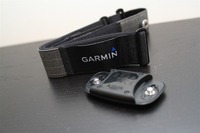 | Garmin ANT+ Heart Rate Strap (Premium Soft-Strap) - HRM3 $50 | $50 | Amazon |
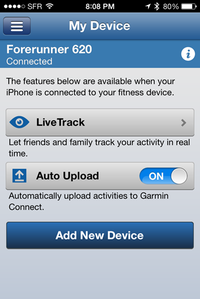 | Garmin ANT+ Heart Rate Strap (with Running Dynamics) - HRM-Run $99.00 | $99.00 | Amazon |
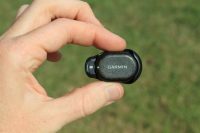 | Garmin ANT+ Running Footpod (Mini) $45 | $45 | Amazon |
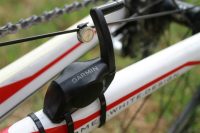 | Garmin ANT+ Speed/Cadence Cycling Sensor (GSC-10) $35.00 | $35.00 | Amazon |
| Garmin Bike Mount Kit (for mounting any watch onto handlebars) $10.00 | $10.00 | Amazon | |
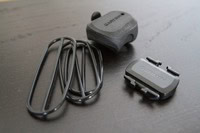 | Garmin Cadence-Only ANT+ Sensor (magnet-less) $39 | $39 | Amazon |
| Garmin Solar Charging Kit $71.00 | $71.00 | Amazon | |
 | Garmin Speed & Cadence ANT+ Sensor bundle (magnet-less) $69 | $69 | Amazon |
 | Garmin Speed-Only ANT+ Sensor (magnet-less) $39 | $39 | Amazon |
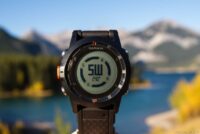 | Garmin Tempe External ANT+ Temperature Sensor $29.00 | $29.00 | Amazon |
| Suunto Bike Mount Kit (for mounting any watch onto handlebars) $10.00 | $10.00 | Amazon | |
| Timex Bike Mount Kit (for mounting any watch onto handlebars) $9.00 | $9.00 | Amazon | |
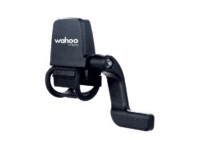 | Wahoo Blue SCv2 - Bluetooth Smart/ANT+ Speed/Cadence Sensor $59 | $59 | Amazon |
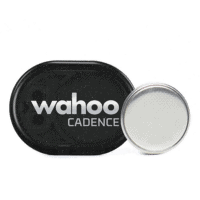 | Wahoo RPM (Bluetooth Smart/ANT+ Cadence Sensor) $34 | $34 | Amazon |
Thanks for reading! And as always, feel free to post comments or questions in the comments section below, I’ll be happy to try and answer them as quickly as possible.


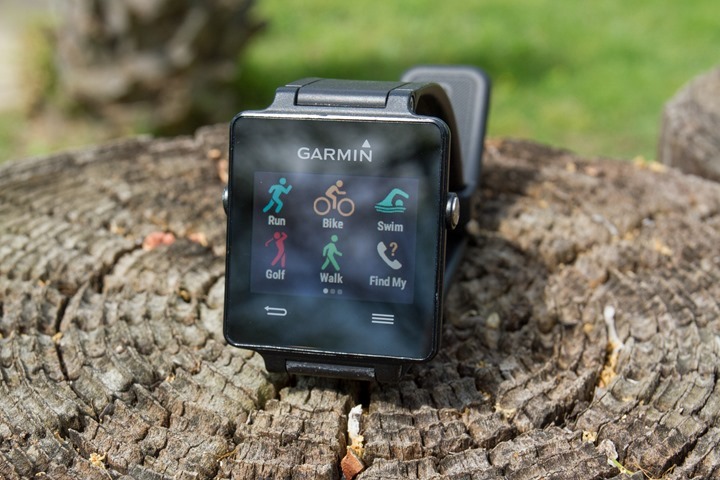
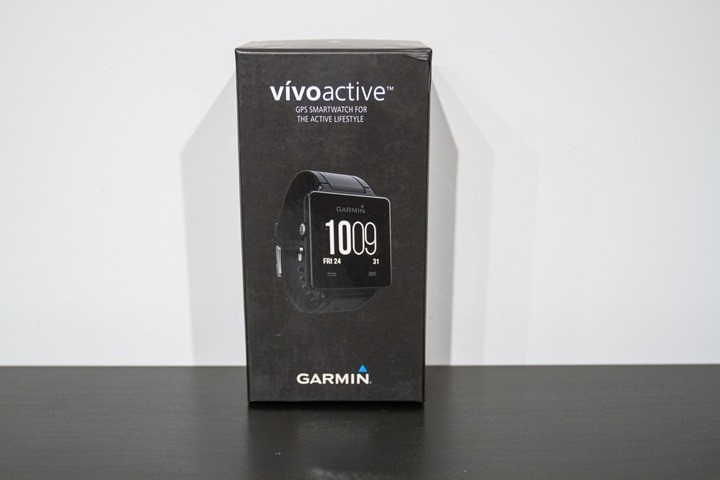

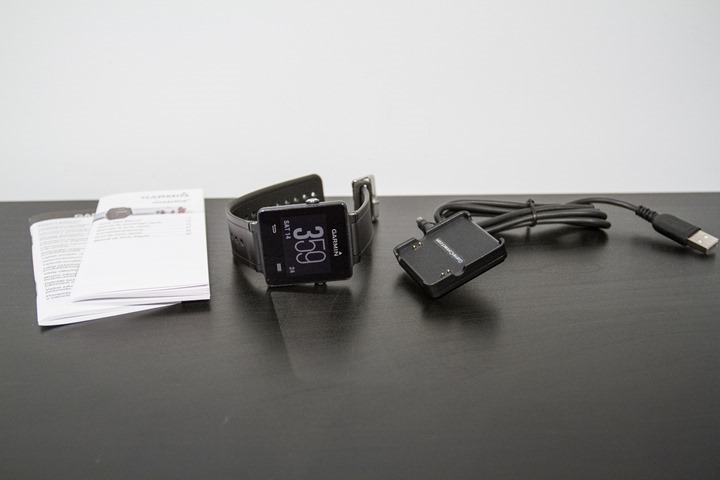
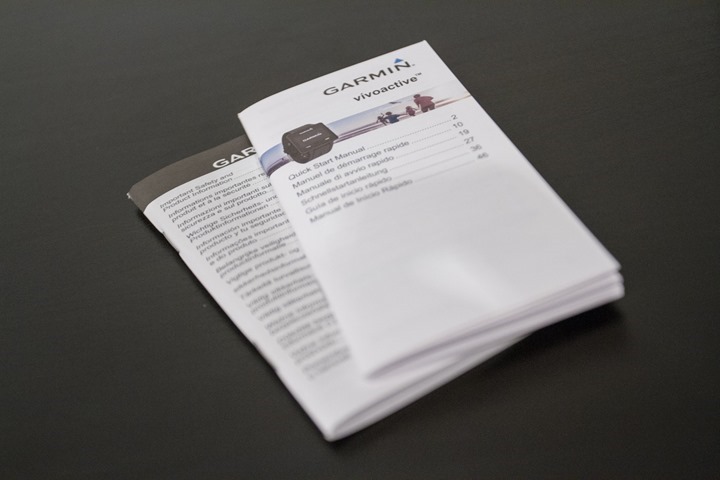
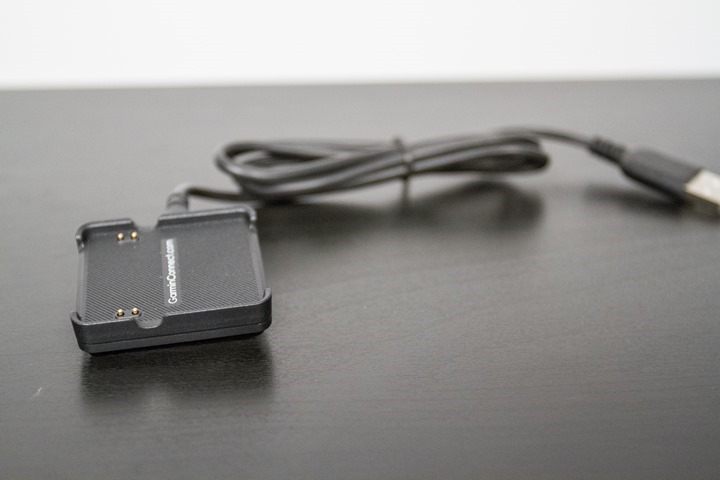
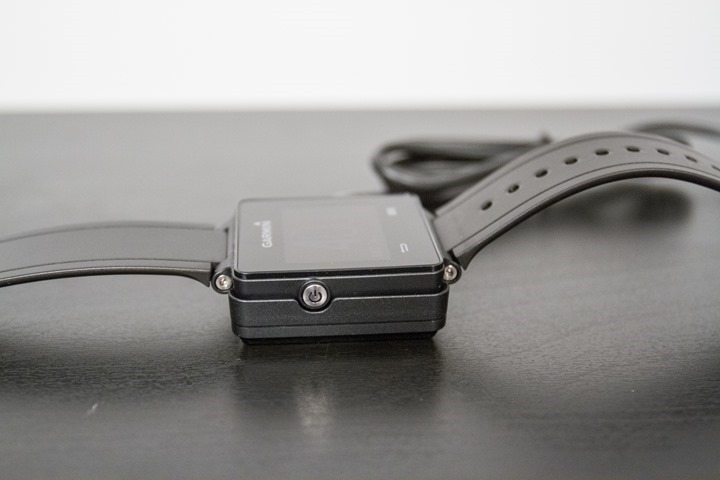
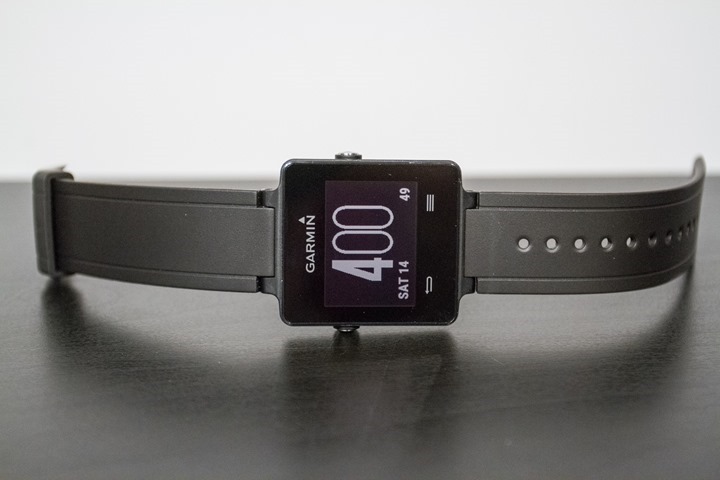
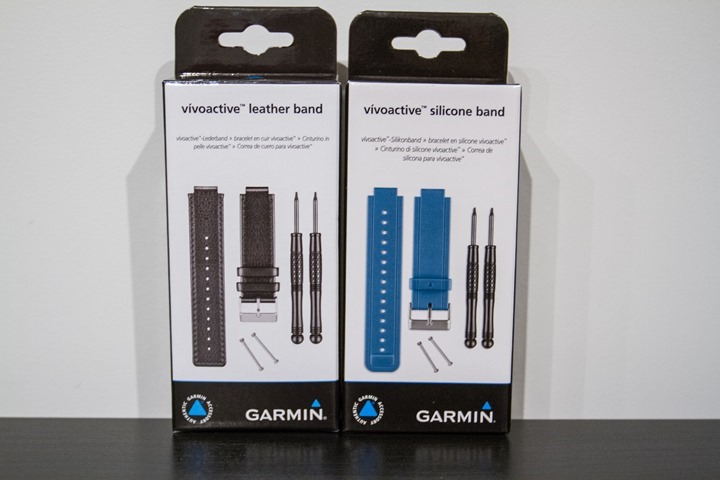
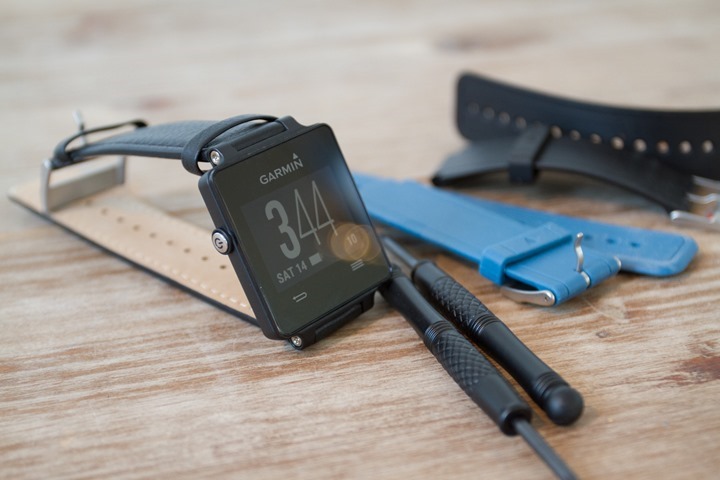
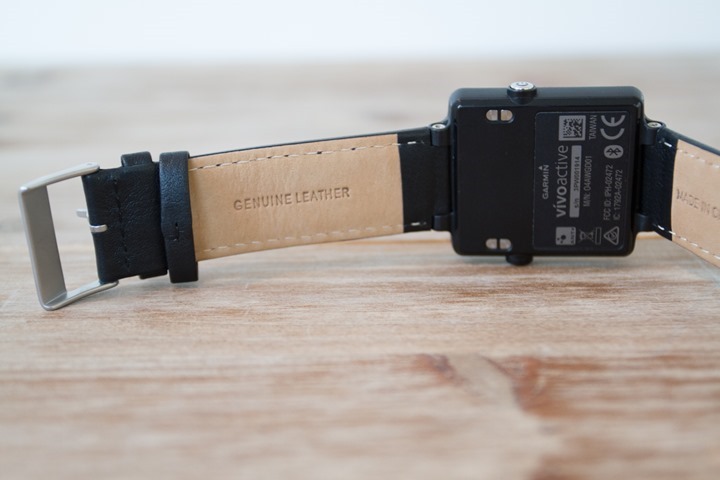

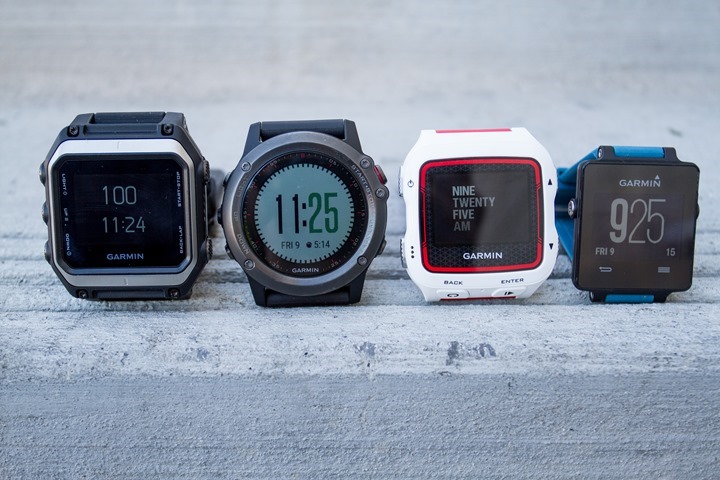
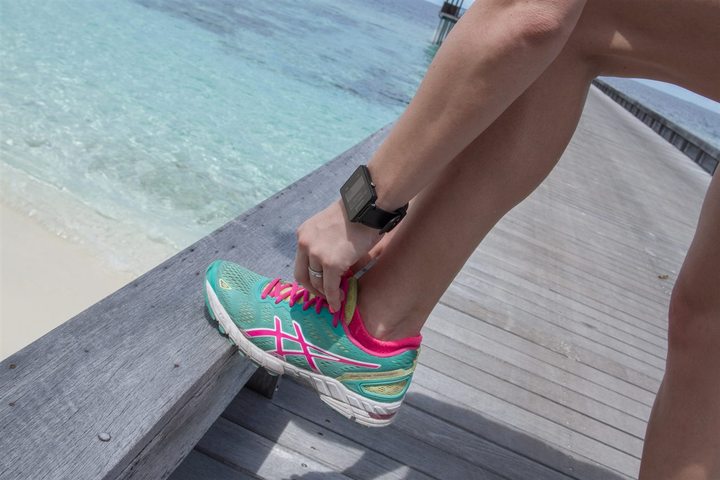


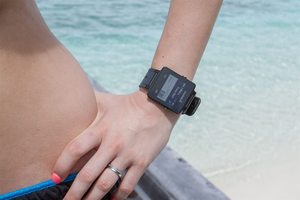

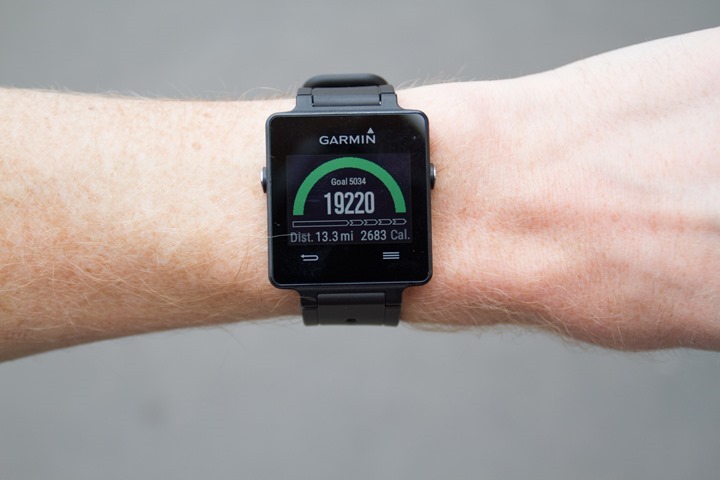
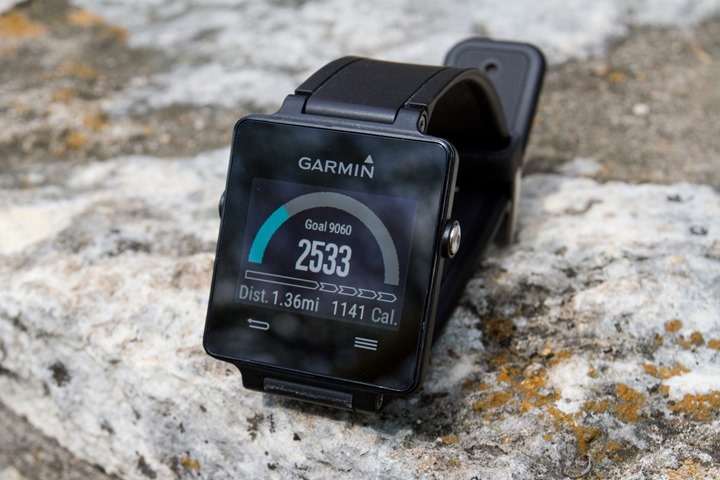
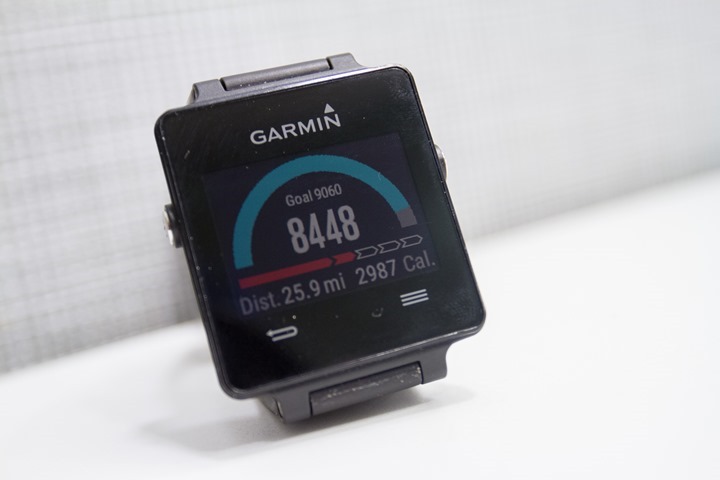
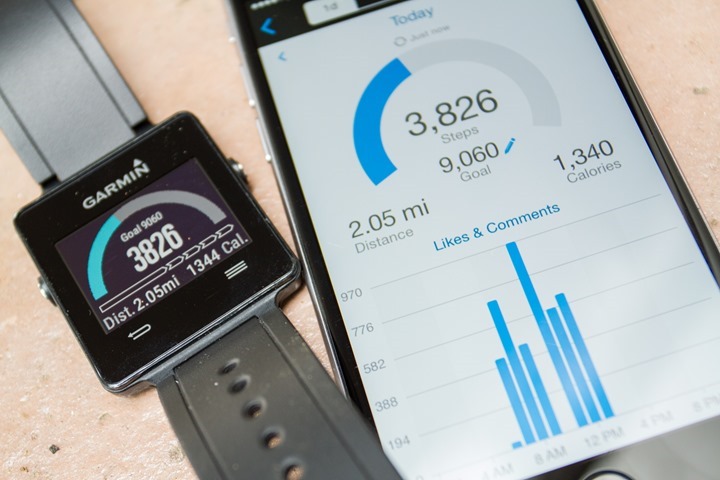

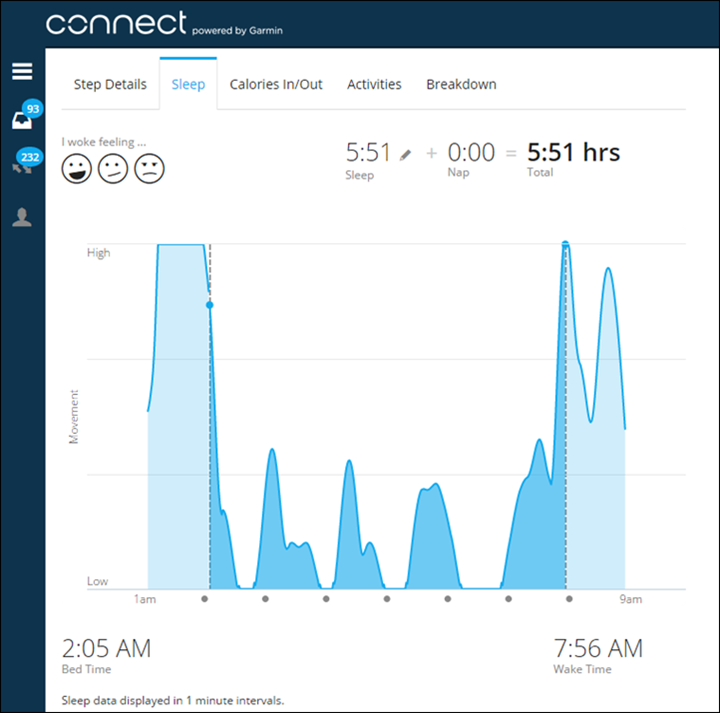
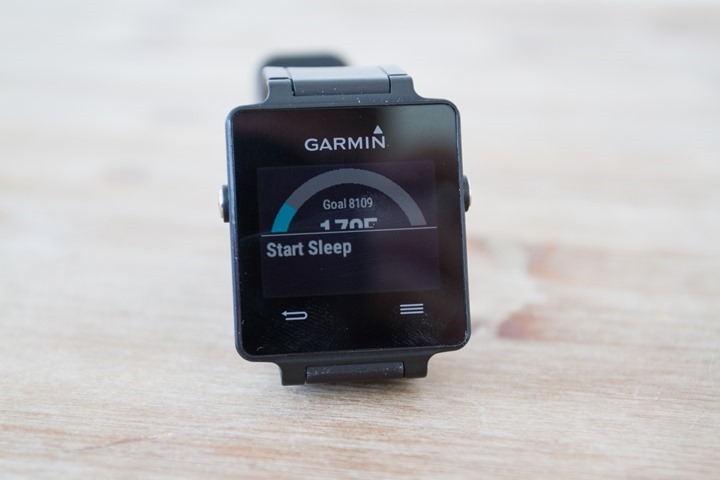
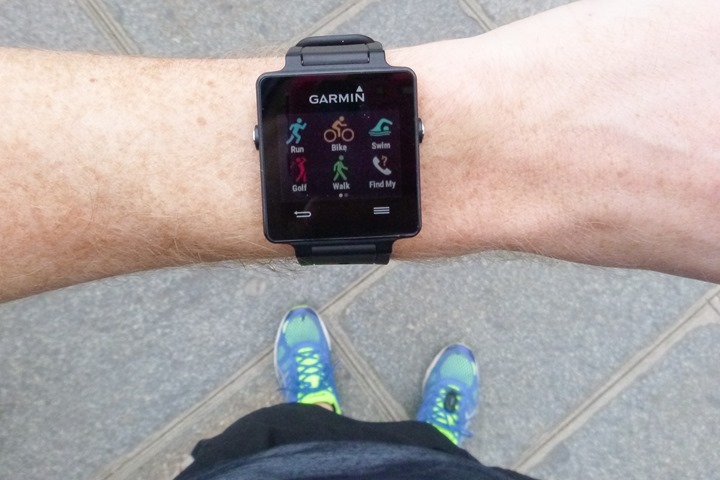
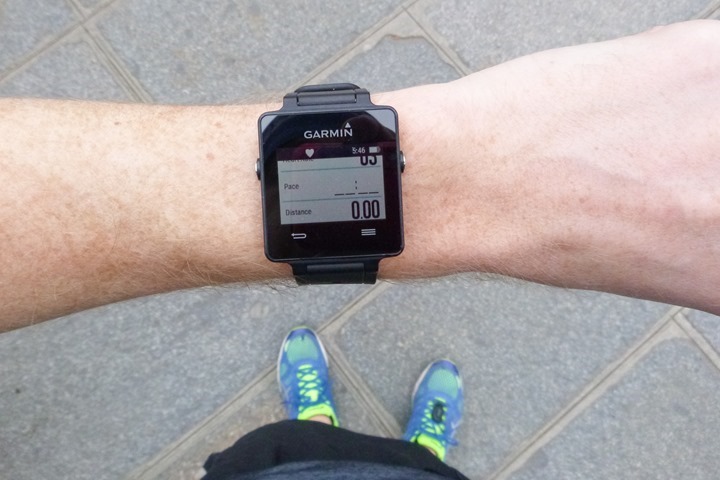
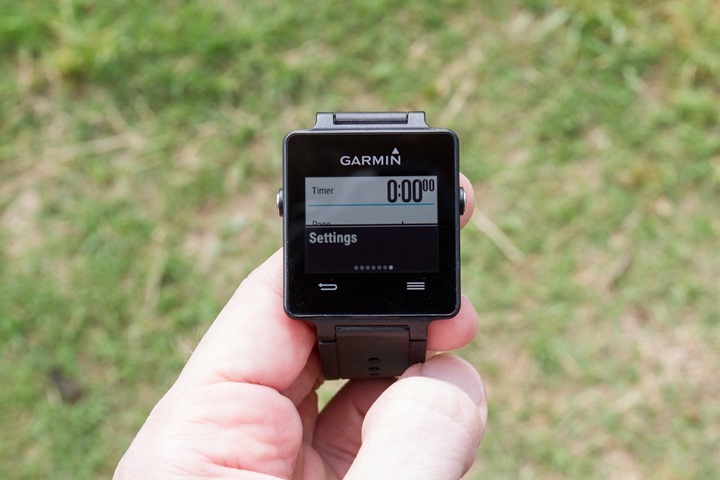
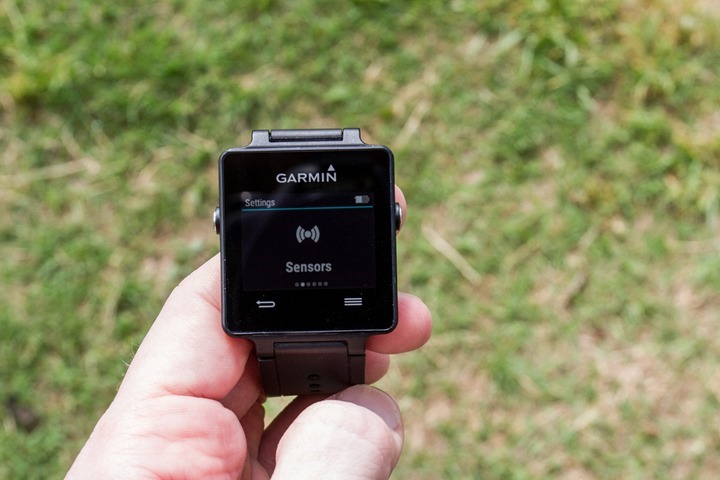
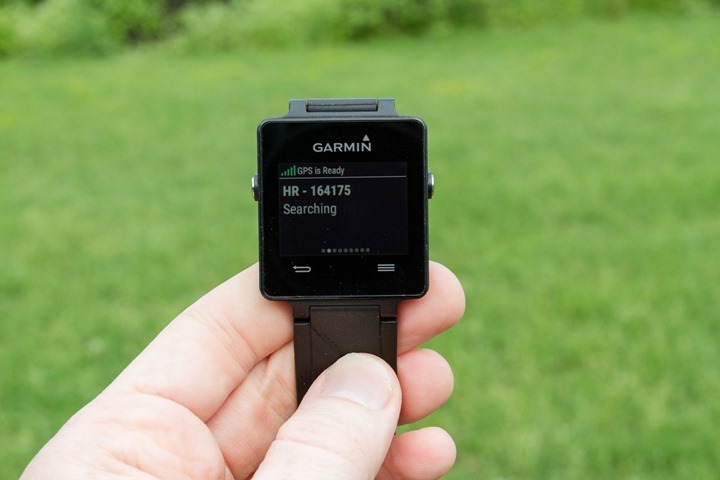
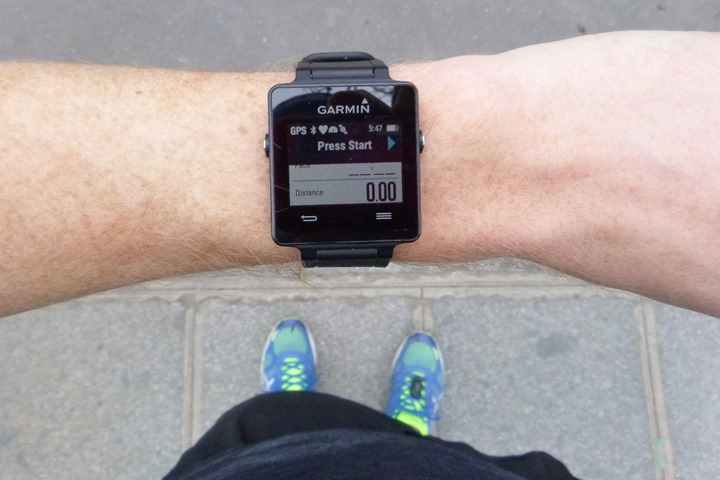

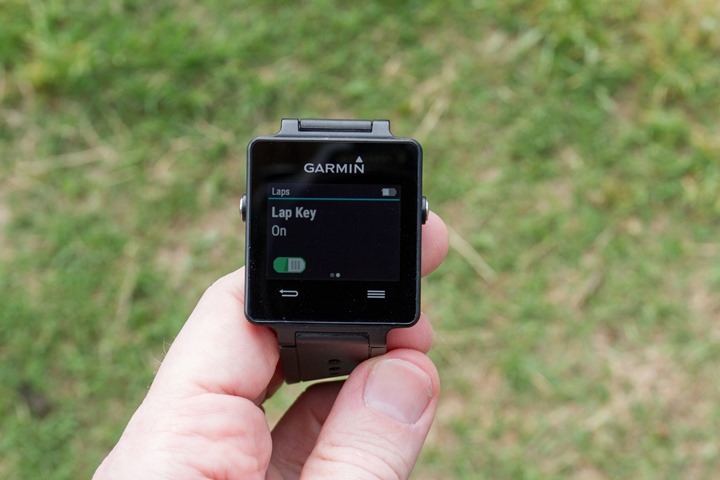
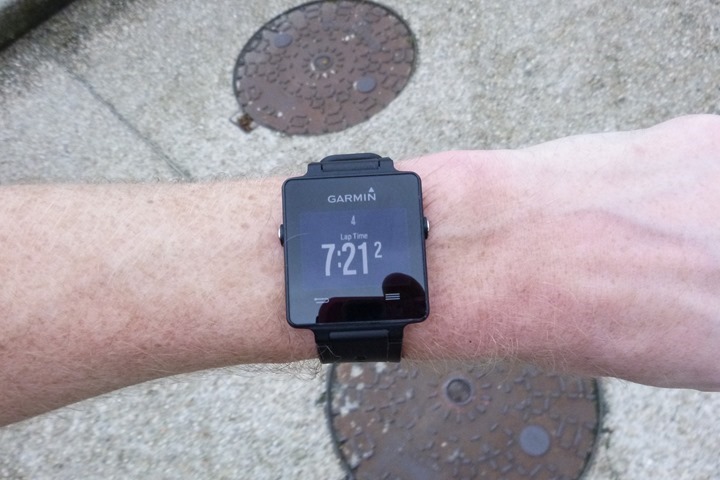
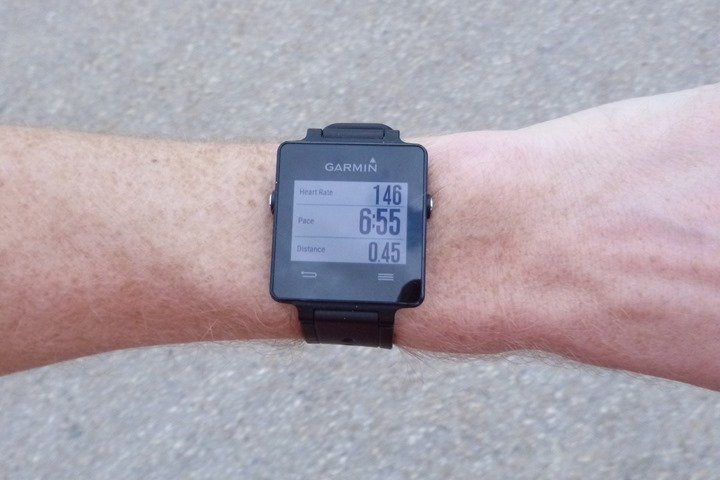
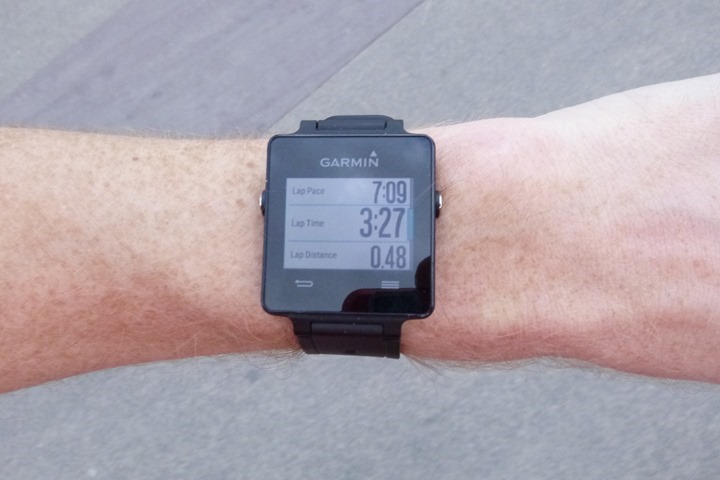
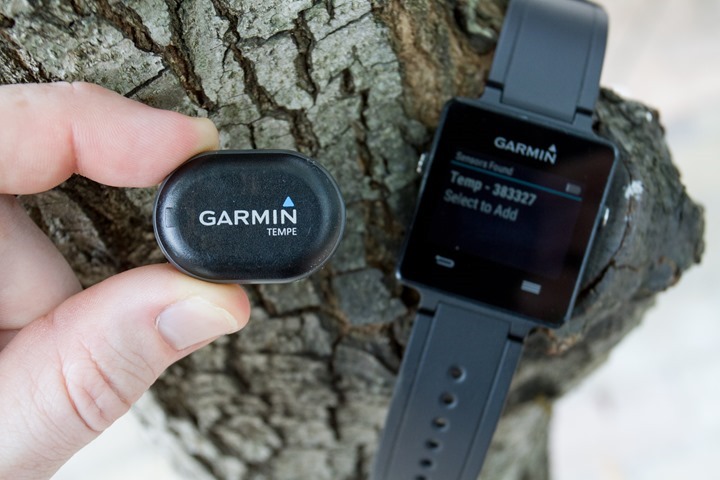
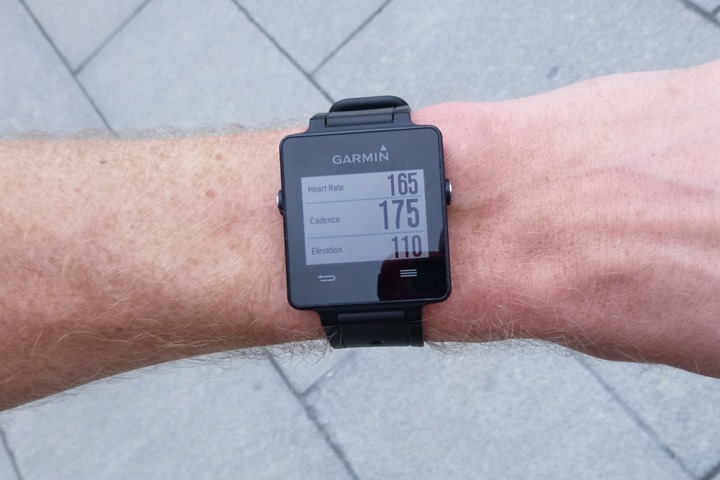
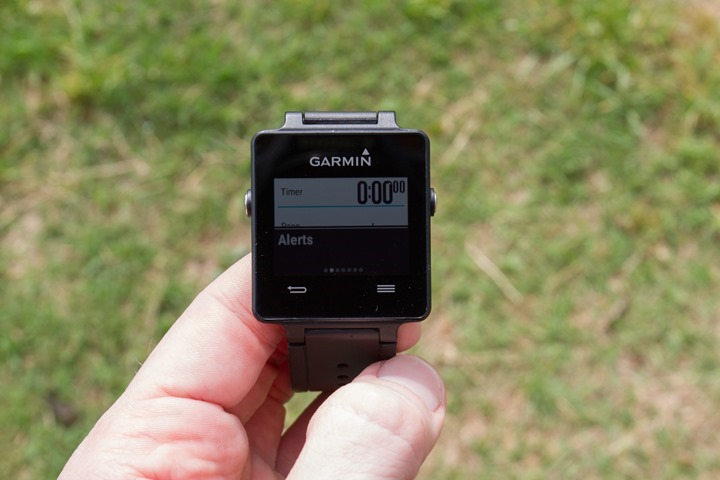
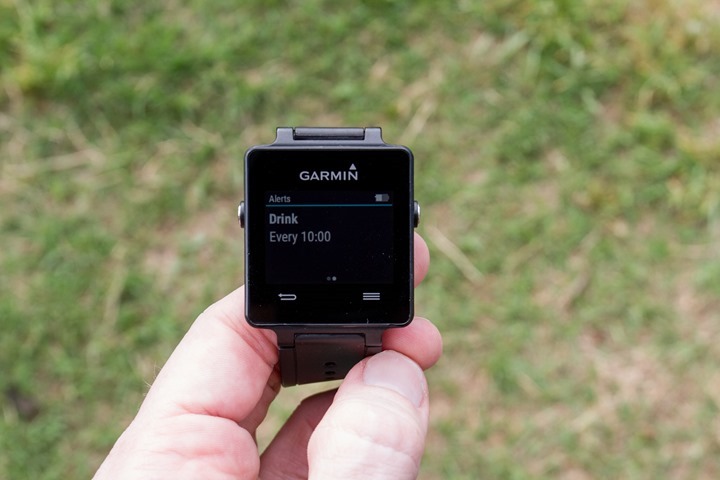
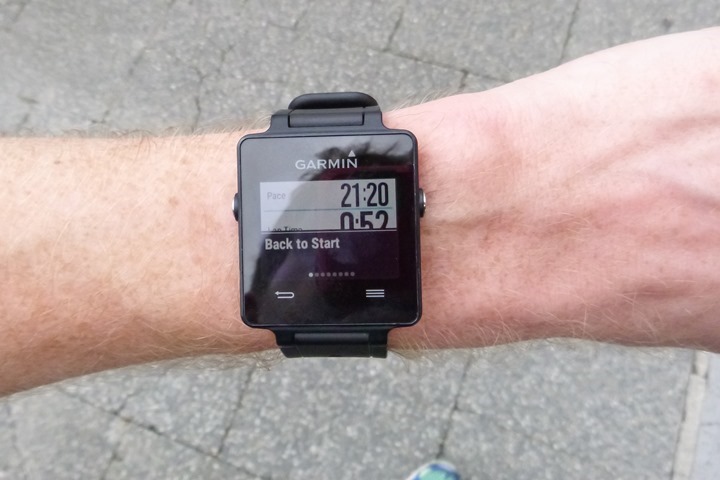
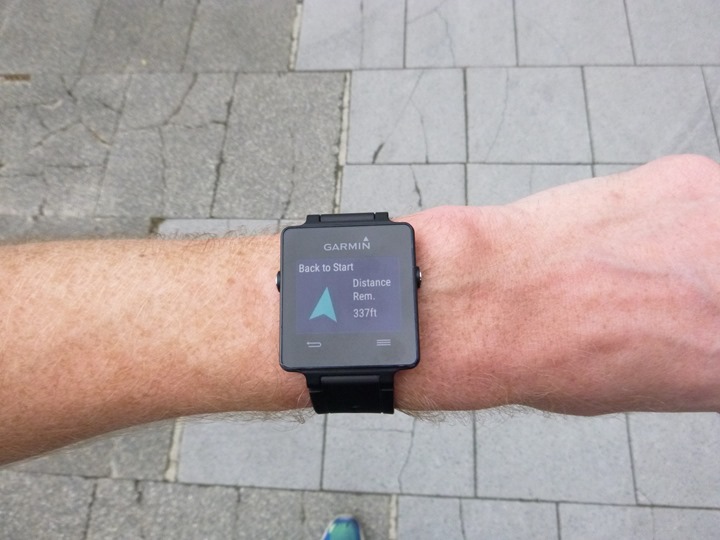
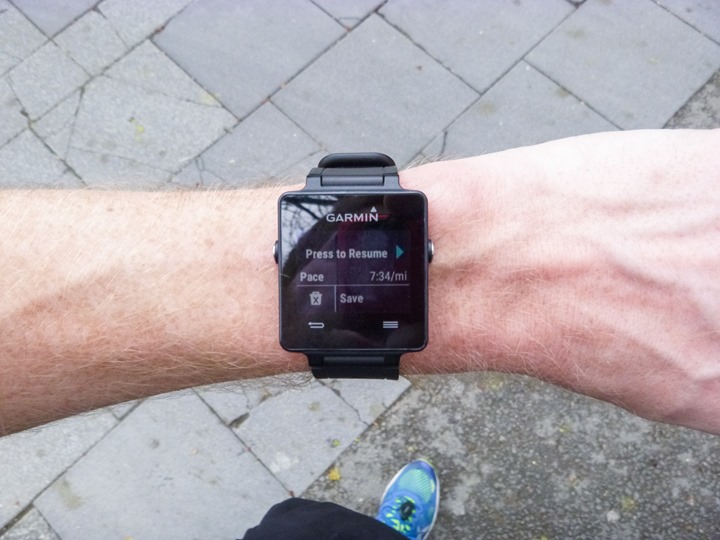
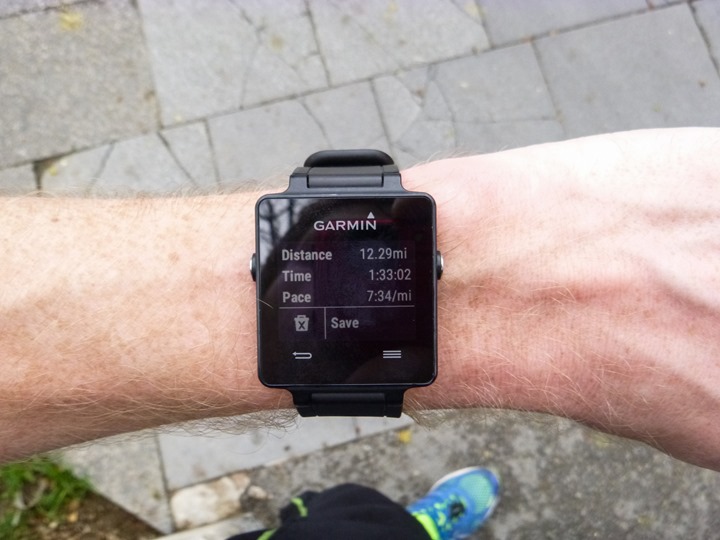
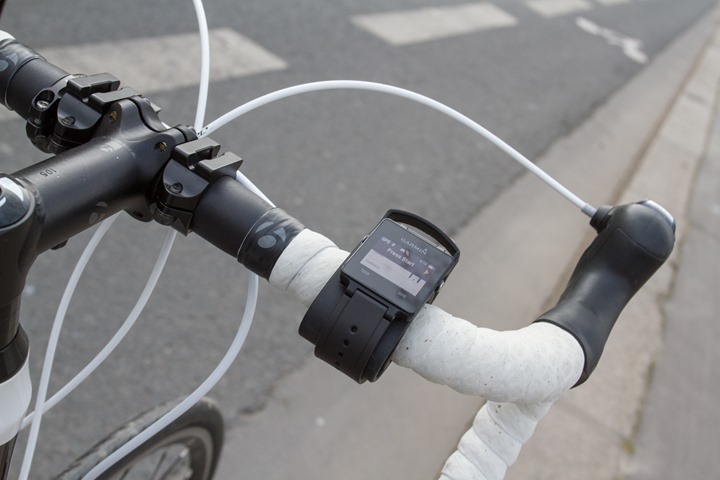

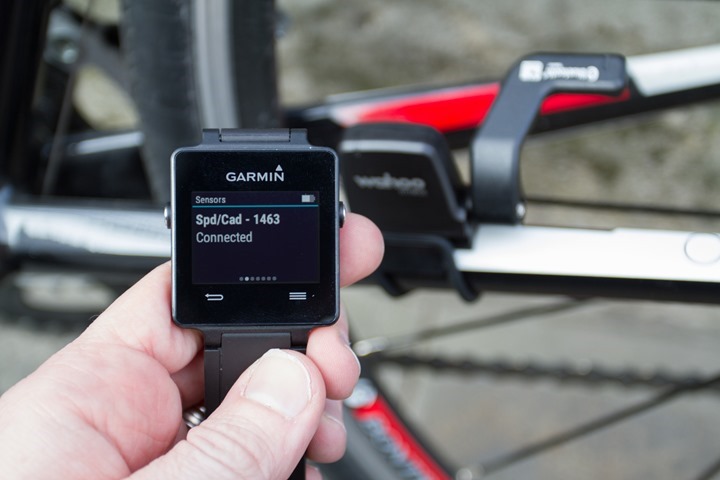

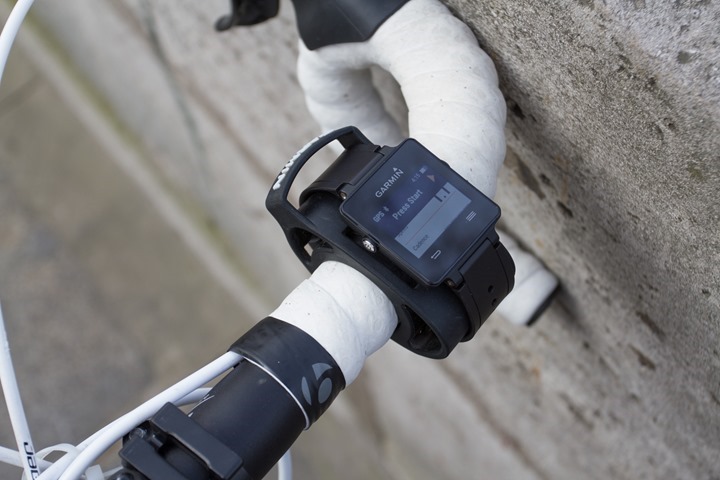
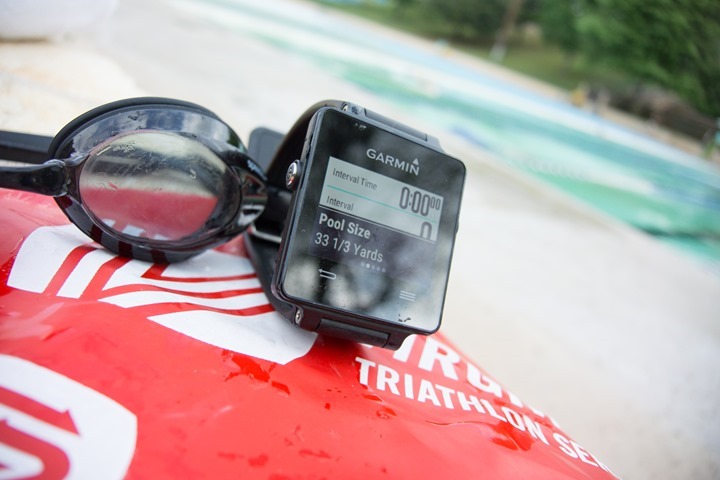

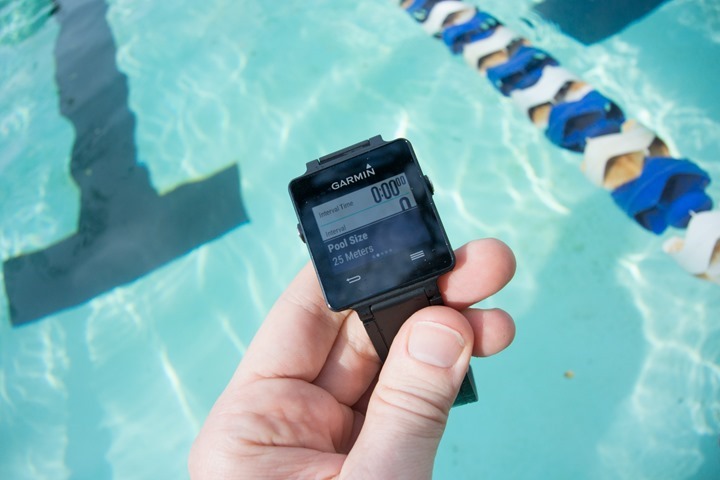

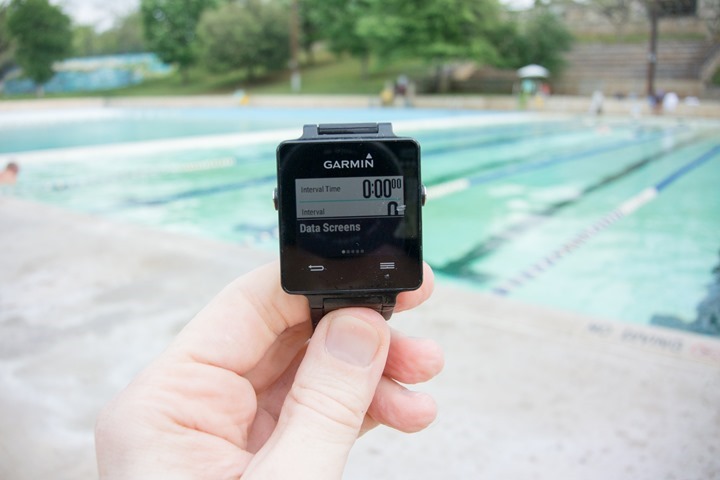
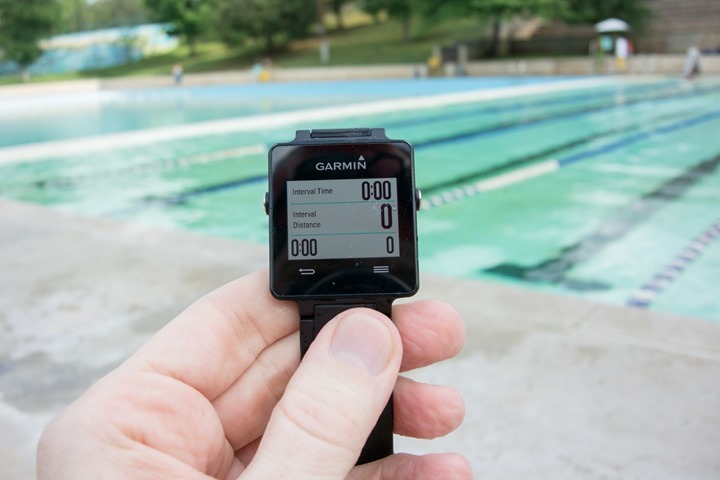

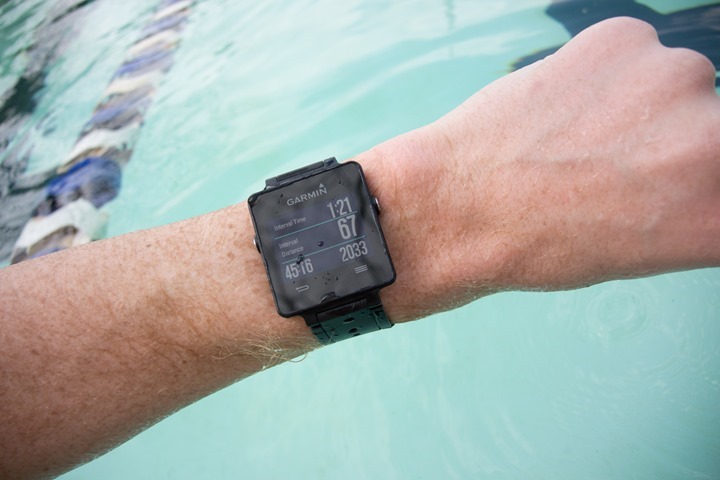
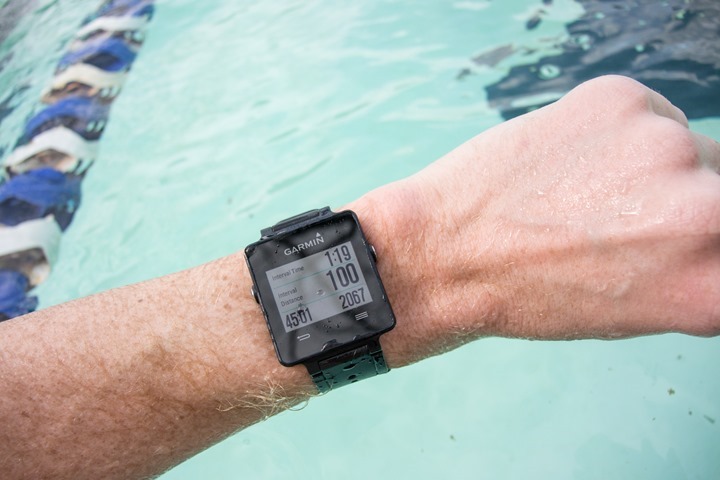

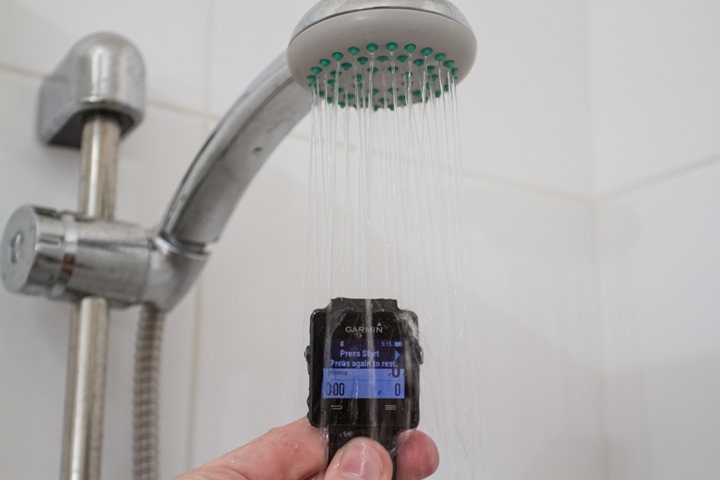
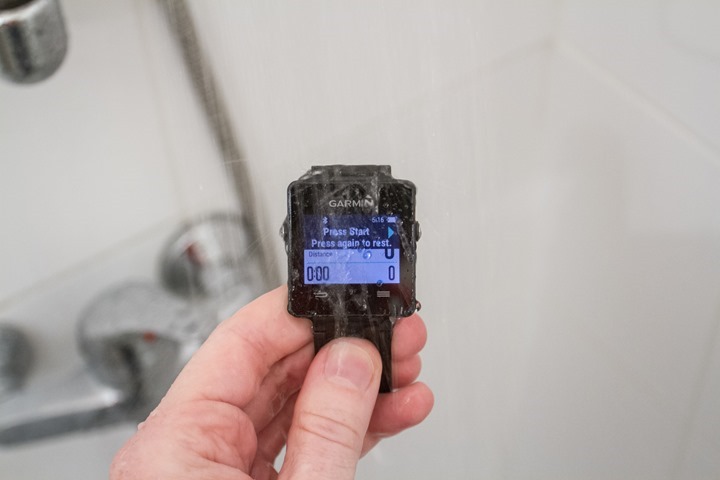
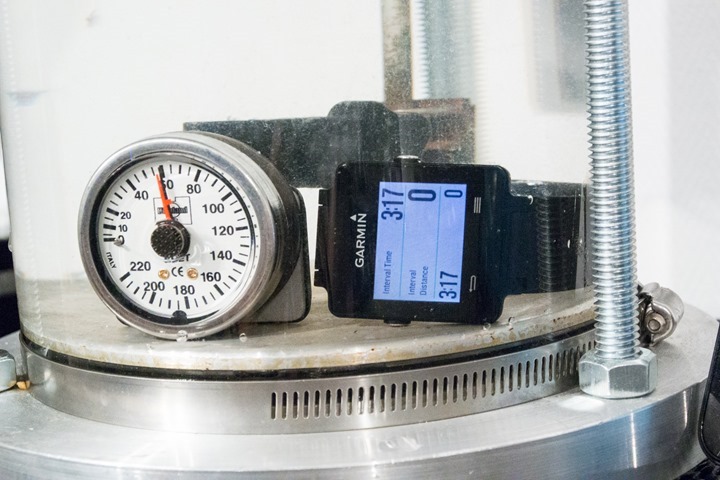
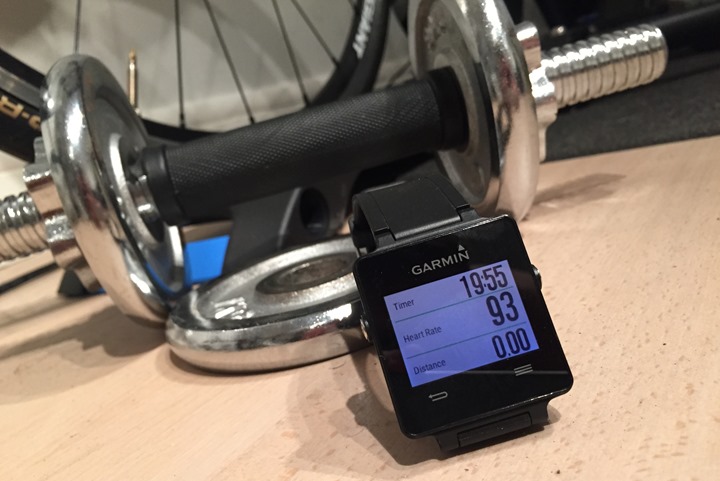

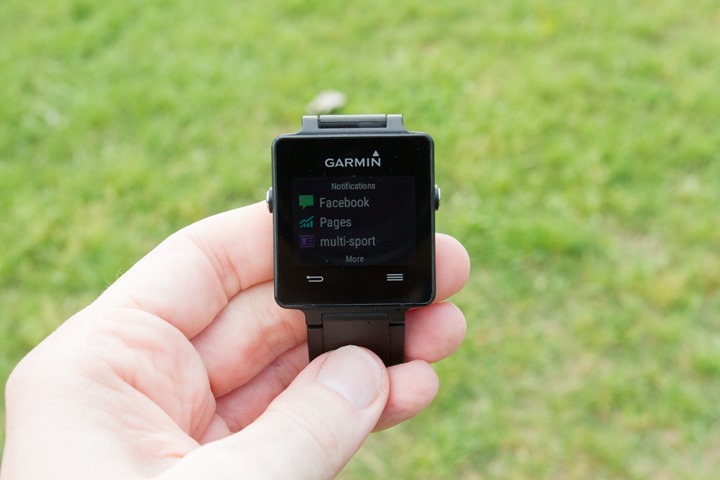
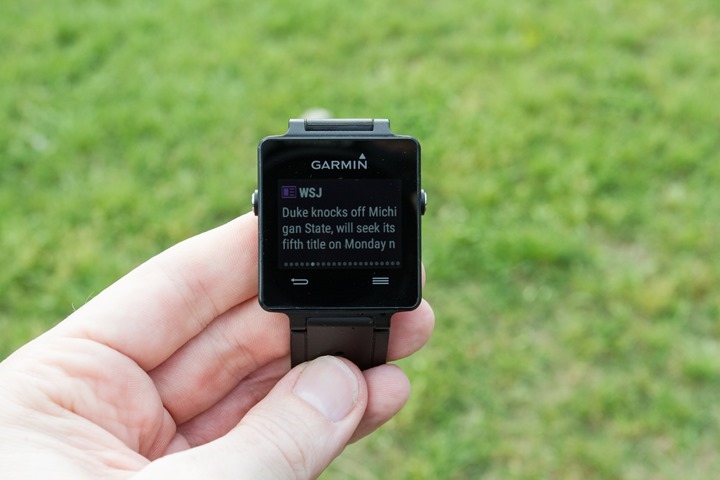

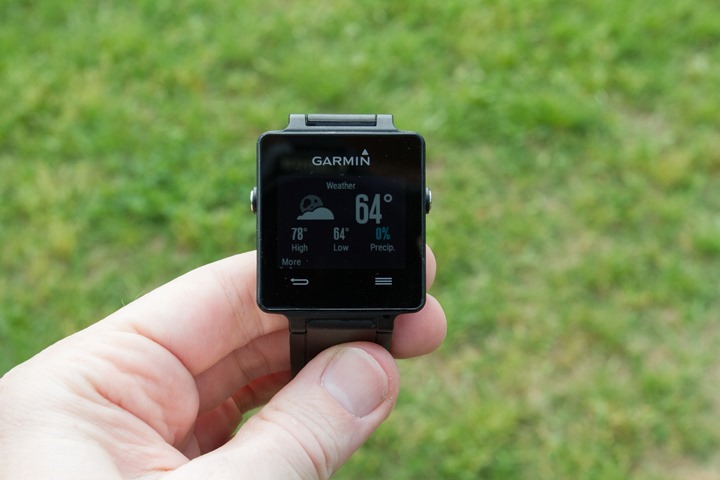
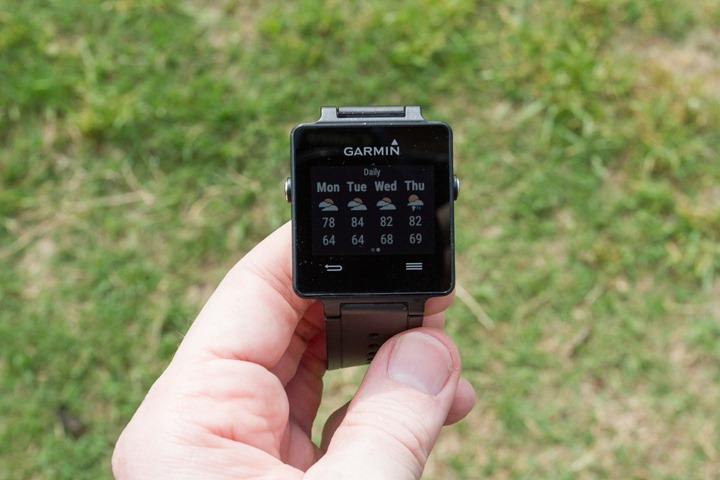
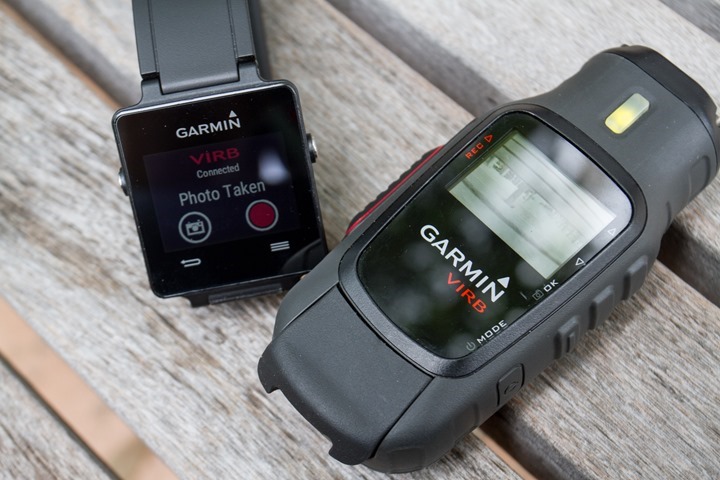
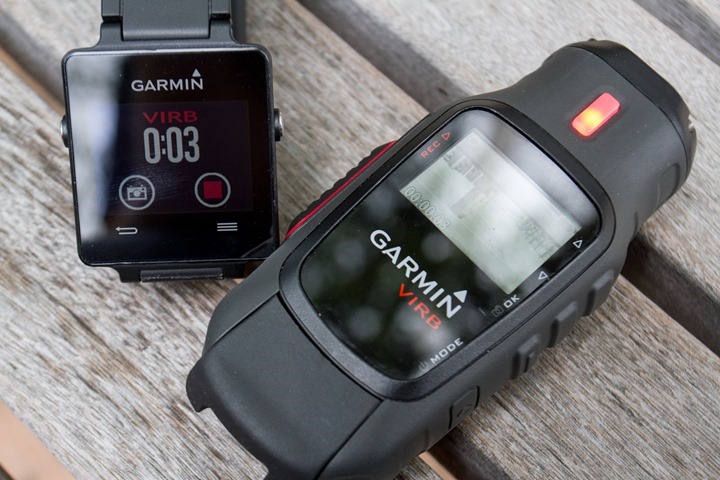
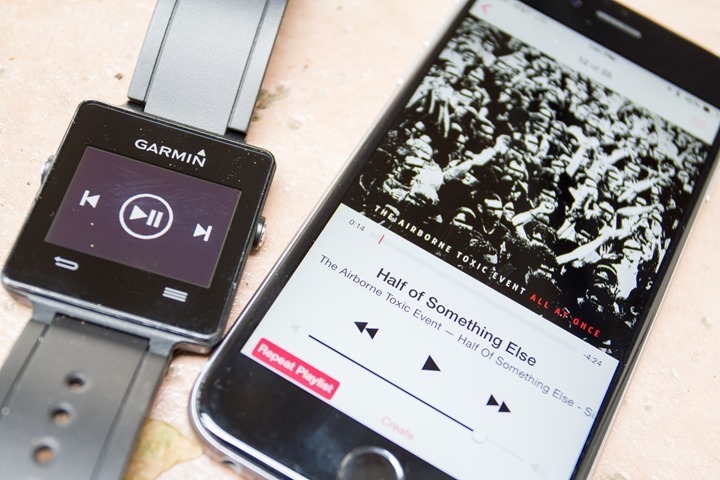
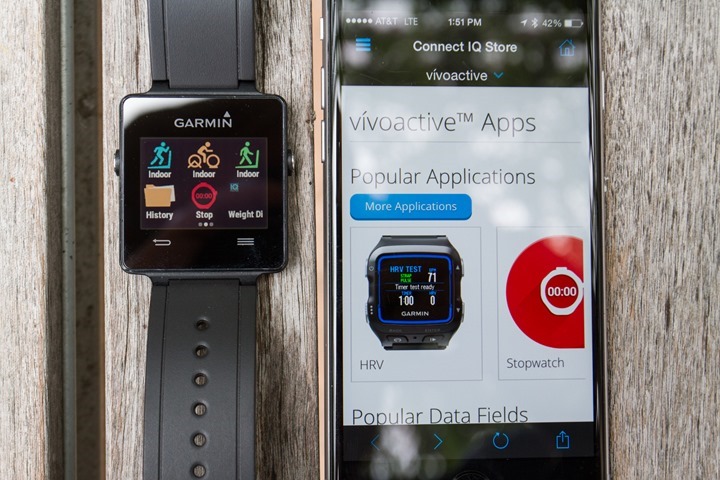
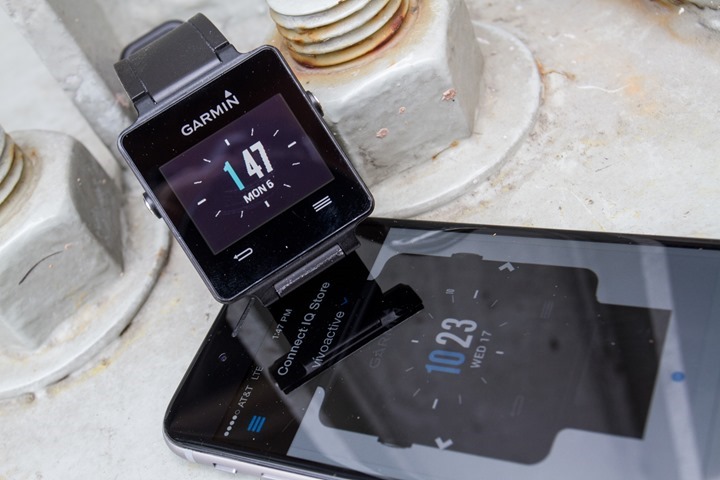

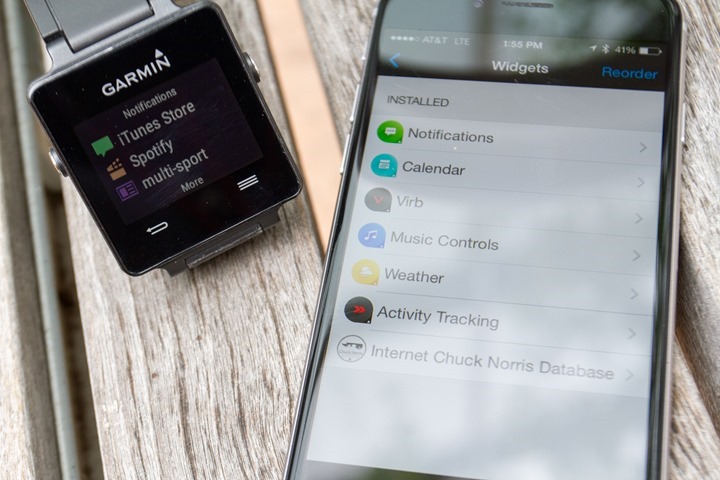
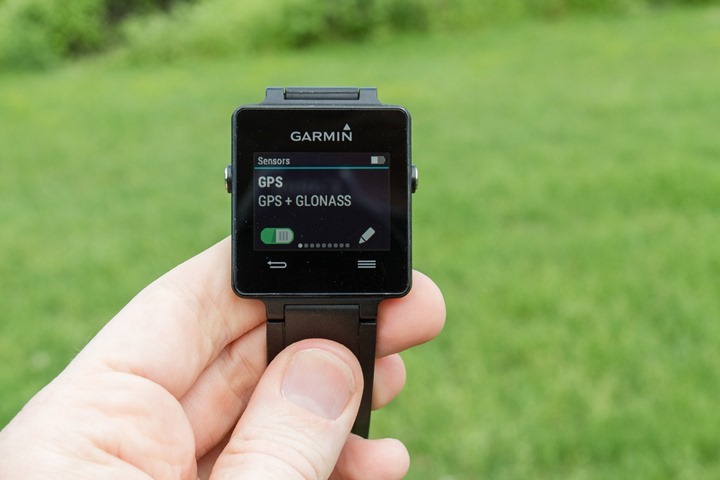
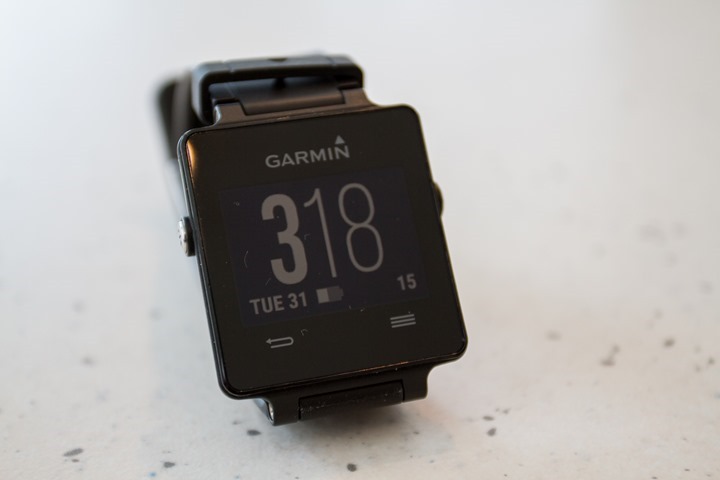

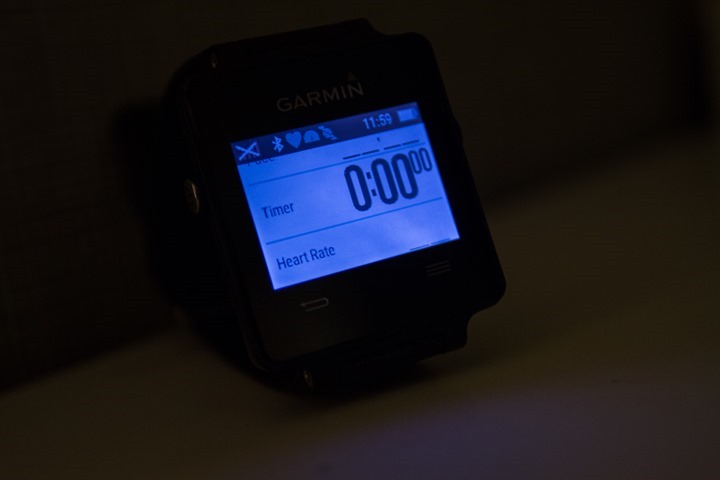
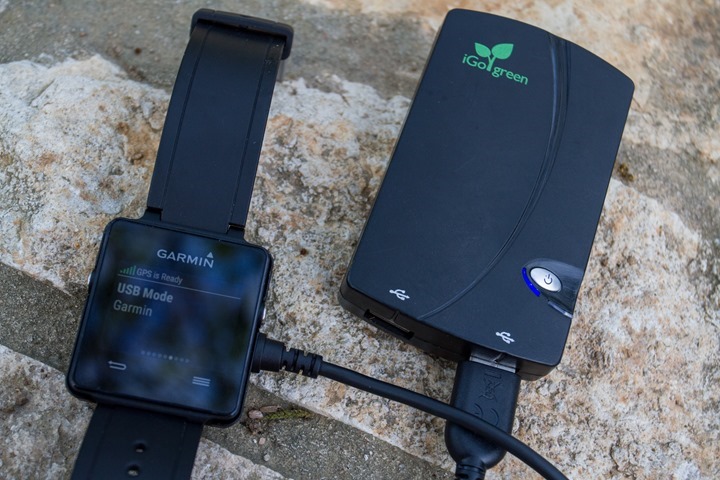
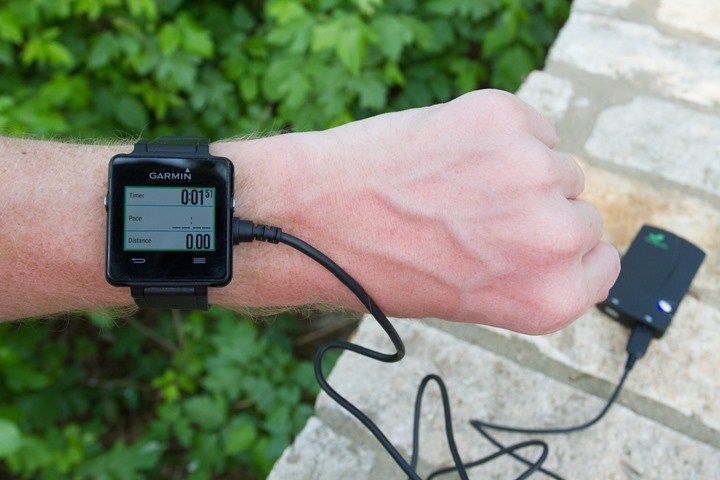
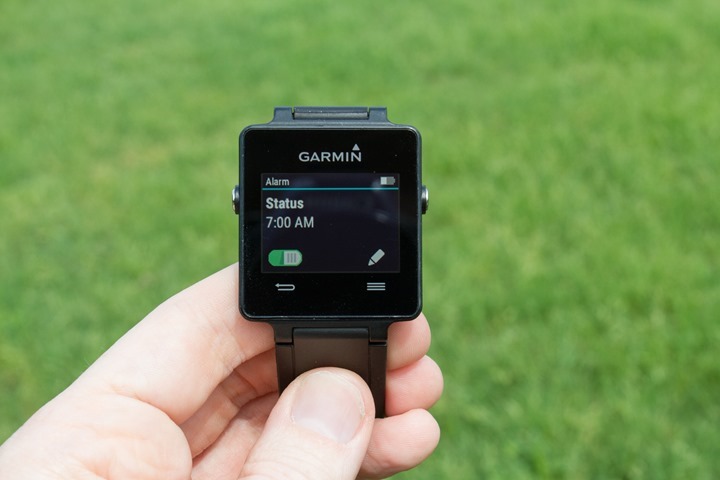
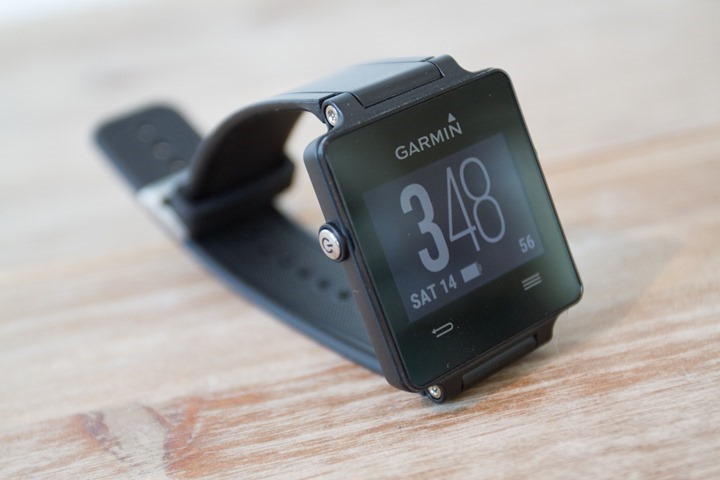
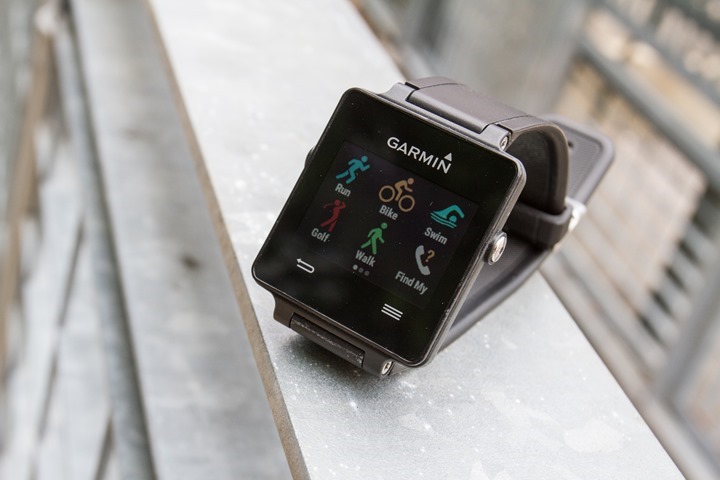


















This is the most thorough review I’ve ever read and it has helped me make a very informed decision. Thank you for all the detail and work!
Thanks a ton for posting the page. It has come in useful for me.
Thanks a ton for posting the page. It has come in useful for me. I just got my VivoActive today, 02/14/16.
Do you think that the Vivoactive could replace my Edge 705? I don’t use any of the navigation features of the 705 anyway.
hi,
i am considering buying a vivoactive to replace a pebble classic.
do you think garmin will short term drop the price of the VA1 now that they have announced VA-HR?
They dropped the price a bunch going into the holidays. I’d expect to see it return to those prices at some point. Probably not like tomorrow, but I’m betting within a month or two.
I have a heart condition. I have started swimming again and need to accurately see my heart rate. Not overly fussed on all the other stats as I am fairly restricted in my activities.
I noted you recommend Vivoactive for swimming, so naturally my next step was to read this article. My question, is the Vivoactive likely to suit my needs or could you suggest a better option? The chest strap sounds uncomfortable. .
Thank-you very much for your time. Of all the reviews and articles I have read, yours is far superior.
Ray,
This was a great review and led me to buy a Vivoactive about a year ago. I’ve been very happy with it.
One question I have is related to its tracking of Elevation change. I’ve always known it’s a bit off, but, today, I ran over two bridges which have significant elevation change, and it literally shows a flat line on my Garmin Connect. So I’m thinking the GPS maps don’t show the actual elevation of the bridge, and the Vivoactive basically completely missed it.
I heard your commentary on the MTA podcast which got me looking at this again. Is there anything I can do to get better elevation results with this device. Also, are there any run mapping sites which have an accurate view of elevation changes if I plot my course on them?
Thanks for any insights you have on this.
Hi Mitch
I tried every think possible to get the elevation to work on the vivo fit. If you go into the Garmin Connect page and manually adjust the elevation setting it gives a better reading, however you have to do this manually on line every ride that you do. I was very disappointed and its now sitting in its box after only one months use.
I ended up ditching it and going with Apple watch and am extremely happy with using strava auto upload to garmin. Very accurate. Easy to use.
Thanks for your feedback. I tried disabling the elevation correction and it does seem to capture more of the dynamics, but still completely misses the large bridges I went over — I suspect that’s because GPS maps must show the bridges as flat, but I am obviously not sure.
I’m not using the Vivofit, by the way, but the Vivoactive, but maybe they both have the same issue.
Either way, I like the device and ignore the elevation data from it.
GPS based elevation is tricky. In some situations (like bridges), it totally misses it. And even if you use elevation correction, it’ll also often miss bridges because it’s using radar imagery from space. So if the object and the GPS track are just a tiny bit mis-aligned, it’ll have you running flat. :-/
Great review, as always, Ray. I wanted to follow up on this comment: “The biggest recommendation I would make though is that I wouldn’t buy either of the FR220 or FR620 these days. ” Having had it for a year, would that still be your recommendation? I bought a 620 a month or so ago and really liked it. I just got the Vivoactive and I’ll sell whichever one I decide not to keep. I’d be interested in your thoughts – I primarily run, mostly on the road but also on treadmill or indoor track. I prefer the 620 running screen to the stock Vivoactive, but I got a ConnectIQ screen that shows I think 7 fields on it, which is nice. I liked the running metrics that The 620 has and VA doesn’t, although I’m not sure how much I would really use them. I wouldn’t use the VA as a daily fitness tracker, so that’s not an issue. I like the dedicated workout option for treadmill run on the VA, although I can do the same thing on the 620 by turning off the GPS. I also do other fitness activities like P90X and insanity, for which I use the treadmill walking option on the VA and just disabled the GPS on the 620. I don’t love either screen, but I think the touch screen on the VA may be a bit more responsive. SO, I’m torn about which to keep, and go back to my original question – for primarily a runner, is Vivoactive still the better choice? Thanks!
It depends a bit. The prices have changed quite a lot since then, both for the price of the Vivoactive, but also the FR220/620. Further, we’ve got new options like the FR230/235/630.
These days, I think my best mid-range running watch would be the FR230 (same price as the Vivoactive was), however, we might see once the Vivoactive HR gets released.
Hi, Nice and very in-depth review. Due to this review and as a nice extra addition that next to my sporty activities, it will also give me distances while golfing, I have purchased the Vivoactive 2 weeks ago.
Before owning a Suunto T3, overall I am not disappointed. The fact that there’s additional apps available is and open for development is a good sell point. Now I have to say I do miss the EPOC (recovery time) that the Suunto’s have. Also lack of a real multi-sport activity for Tri or Bike-runs is a bit disappointing.
Hope somebody will find the time to realy develop a solid app for this.
Concerning VO2MAX.
Here I have a question.
Although it is not a device functionality, I’ve noticed that it is a field in the phones Connect App. And that it in the meantime has increased since I started using and uploading data.
Has anybody any experiences here? Is the VO2MAX really estimated afterward in the app? And are you assuming it is a fair estimation? And if so, what criteria should be taken into account to get an VO2MAX estimation? (X min @ X Bpm/pace/zone) Is it running only or also cycling?
krgds
Jake
Hi,
Thanks for the great reviews. I’ve been using my vivoactive for kiteboarding for about 4 months now and really love it. I use bike app mode typically. I noticed if I use the walk or run app the speed didn’t seem to update frequently or display as accurately.
Do you know how garmin chooses to calculate & display gps speed in the different APPS?
Maybe walk is 5-10 ave speed? (& they call it speed)? maybe with a cap?
Maybe run is 5 sec ave? Maybe with a cap?
Maybe bike is 1-3 second ave?
Also, I don’t think I can define a new activity, like kite, in vivoactive, can I?
Also, I love the garmin connect community apps, fields etc., like the dw maps, google map, daylight remaining.
Best, Rob
There are some negative reviews on Amazon regarding a very dim screen that renders it almost useless. Did you experience anything similar? I was going to but a Fenix 3 until I saw this on the market, and I think this might be a better fit for me. If the screen issue turns out to be true, would the Fenix 3 be good for an every day watch as well?
The Fenix 3 would absolutely NOT be a good everyday watch, it’s HUGE.
I wouldn’t pay too much attention to the criticisms about the screen being to dim. Outside , in bright light it is wonderful. In fact, the brighter the light, the better the screen looks. And that is where you really need to see it, right? When you are outdoors actually being active? And inside… It’s fine. If you have trouble reading it, press the backlight button.
While I personally do find the Fenix3 (HR or otherwise) larger than I’d like for a day to day watch, note that many many many people use the Fenix3/HR daily as a day to day watch. I think the number is roughly in the 500,000-700,000 range right now (sold units).
I have been using the VA for the past year. The screen is plenty bright, and looks even better outdoors. I have back light setting to illuminate on any key/alert, so that makes it easier to see as well.
I’d hit up the Fenix3 post on that, but I since I see them all around town (in France no less), I’m pretty sure people are wearing them as daily watches.
Most people don’t buy $500-$600 watches that look like regular timepieces to only use them for sports.
While the Fenix might have sold that many units, I highly doubt they are being used as daily worn watches..
I guess that could be, what with watches getting larger and larger nowadays. I just know that I don’t like a big watch personally.
Nor do I like spending $500-$600 on a watch…
Hi Ray,
Just a quick question on Swimming alerts with the Vivoactive.
Can the time alerts be set to fractions of a second (e.g 26.25s) or is it whole seconds like the Fenix 3 (e.g. just 26 or 27s)
Hello Ian,
Just checked on my vivoactive with latest firmware (or so I believe).
Indeed you can set alerts only on whole seconds.
Up to 8 hours. (No idea why this max limit is set to 8 hours….)
Thanks Nico.
8 hrs ! I sometimes wonder if the people at Garmin have ever used their devices for training at all.
Just out of curiosity (truly), what scenario would you use an alert on the Vivoactive that only alerts every 8 hours? I could kinda see on something like the Fenix3 that has the battery life to do that.
But with the Vivoactive, the alert would only ever fire once, since the battery life is only rated at 10 hours.
I wouldn’t – I was just reacting to the fact that that is an option – it’s bazaar!
What I would really like is factions of a second to help keep a CSS pace in a 25m pool. Set an alert every 27.25s for example. No watch seems to be able to do this only 27 or 28 s is allowed.
Of course to make it perfect it would reset on each turn, and also allow some sort of programme to be loaded so you could say do 4x400m with a negative split
Trail ultramarathon distances, you could change your socks/shoes out to a dry pair after several hours.
As of now I use my phone with Ant+ connected to my foot pod and heart rate monitor. With apps like Wahoo I can choose outdoor run to use gps to map my course, but there is a setting that allows me to use the foot pod for pace and distance.
With the Vivoactive if I choose outdoor run, do I have the option to use the foot pod for pace and distance, or does outdoor run only use GPS for pace and distance?
thanks
Jay
I’d like to chime with Jay; how can I make sure that the pace/distance is coming from my foot pod rather than GPS? In a Garmin forum, one user mentioned that there are certain sensor settings for the foot pod such as “Off/Indoor/Always”; he believed that the setting “Always” leads to pace/distance from the pod only, ignoring the GPS signal.
Can anyone confirm that this is true?
Or is the only solution (as of now) to set the watch on “Indoor Running” and connect to the foot pod?
Please allow a second question at this point: the above mentioned “smoothing” of the actual pace when using GPS, is this done with the help of the signal of the internal accelerometer? I am under the impression that the Vivoactive’s current pace is a bit more accurate and less “jumpy” than previous GPS watches that I used. Possible correlation between GPS and accelerometer for improvement?
thanks a lot
Felix
Felix I posted a reply but it had 2 links in it from other sites. I guess they don’t allow that on this site.
Basically the 2 sites I linked say the Vivoactive does not allow pace by foot pod while GPS is on. Newer watches like the Fenix 3 do. Maybe the Vivoactive HR will allow this. If you google search fellrnr best running watches he has a chart with a column that list all watches that allow foot pod pace while gps is active.
A guy was selling a never used Vivoactive on craigslist for 100 bucks so I bought it. Just did a test treadmill run and there is no way to choose foot pod for pace when outdoor run is chosen as activity. I did choose outdoor run on the treadmill to see what would happen. Even though it did pick up GPS I believe it was a bad signal because it was using the foot pod for pace and distance. Kind of like when you go in a tunnel outside it starts using the foot pod if you have one connected. During that same run I stepped off the treadmill and took off my foot pod and then started running again. The pace then defaulted to the internal accelerometer which was pretty far off. Treadmill said 6.5 mph. Foot Pod said 6.9 mph and internal was up in the 9 mph range.
So unfortunately as of firmware 3.5 there is no way to choose foot pod for pace with the GPS enabled.
For Cadence it choose footpod first if that is connected. And if the foot pod cadence goes down to zero it automatically looks for and starts taking the cadence from the watch
For Outdoors it uses GPS for pace, if gps is poor or unavailable it got to the foot pod next and if that is unavailable it defaults to the watches internal accelerometer.
Use indoor run (treadmill run person) and it will find your footpod as long as you have it connected in the settings/sensors menu. You don’t have to activate it after the first time.
When you are outside choose run and it will not use the footpod and will use the GPS for the speed. the accelerometer is mediocre at best in my experience.
Hi guys,
I’m looking seriously at the VA and want to know if the issue of smart GPS sampling had been resolved yet, can this be changed to a more accurate 1 second interval?
I’m happy to use a slower sampling rate for the majority of things but would like to use the watch during soccer training for example, and due to the nature of this large intervals are useless.
Has this option been looked at yet or has anyone used something like a foot pod with any success? Not sure that’d be a valid alternative though depending on how it’s attached.
Thanks all :)
The new Vivoactive HR was supposed to have 1 second recording, however new reviews show it does not. You can look at that in two ways. First if the new one doesn’t have it the older Vivoactive def won’t. Second if they make an update for the new one to get 1 sec recording there is a chance they will have an update for the original Vivoactive.
On my Garmin Vivoactive, I updated the software version to 3.5 last weekend. I have gone on 2 runs this weekend using the stock Run app on the Garmin VA watch. On one, I ran with a friend who had a Garmin Forerunner watch on. Before I had updated from 3.4 -> 3.5, wur watches are usually completely in sync… and will beep the mile laps within seconds of each other. Our run the other day, however, they were vastly different with mine taking a good minute more to run a mile. Then I ran yesterday, and a course I know to be 3 miles was indicated to be 2.6. Has anyone experienced that this problem with 3.5?
I’ve only had the Vivoactive 4 days now and the first thing I did was update it to version 3.5 so I can’t compare it to older firmware
I have a 1.525 mile loop that I run often. I’ve measured it in google maps on satellite view with the distance tool. It measure 1.525. I’ve ran it over 100 times with my phones gps and the IpBike app. I consistently get between 1.52 and 1.53 miles. So i’m confident its 1.525 miles long.
The vivoactive has reported in 15 runs of that loop 1.50 to 1.52 miles. This makes sense to me as the Vivoactive is using smart recording which only records approx every 6-7 seconds. So with the missing data points it tends to shorten a run a little. When I zoom in on the map of my run you can see the points it recorded and its a straight line from one to the next. Wish they would give this model the option of every 3 seconds at least if they don’t want to give us every second like there higher models
So I’m not finding anything wrong with version 3.5. Try doing a factory reset. Turn the watch off. Then hold both buttons together. When it vibrates let go of the left button, but still hold the right. When it vibrates a second time let go of the right button. See if this helps. You will lose anything that hasn’t been uploaded to garmin connect
If that doesn’t help try enabling Glonass. Go into settings. then to sensors. swipe over to gps and click the little pencil mark (edit). Glonass will come up and you have the option of turning it on. I don’t have it on as I seem to be getting decent distance with Glonass off.
Jay
Thanks for the great review :)
Do any of you know if there might be a software update for this watch that might add an open water swim function?
It’s not the most perfect option, but you can download the following triathlon app from ConnectIQ:
link to apps.garmin.com
When I am finished with my open water swim, I just keep hitting start to finish the T1, bike, T2 and run sections. Then I delete the empty bike and run events so I can have the open water swim portion data.
This seems to be the only ‘running’ watch out there that doesn’t look so huge and cheap plasticky on a tiny women wrist. I really think this look also works in an office environment. What really keeps me from buying it is the smart gps tracking, otherwise it’s got all I ask for. The battery duration could be a bit longer for us tortoise runners and long distance hikers, but at least it can be charged while using it.
Anyone can tell me how this smart tracking would actually influence my running? So far I use my phone for tracking my runs, but the battery doesn’t last long with bluetooth on. I do want kind of realistic running lengths and realistic paces.
And battery: Does it really last for the duration given by garmin or shorter? How long does it last with a paired HR sensor (Scosche) I’d not want to use a watch with build-in sensor due to cold wrist sydrom ;)
Any idea how this would do for open water. I know it isn’t officially on the screens, but does it track it? It seems like you could just break down the course in the lengths that the watch supported.
i’m considering purchasing this device. i understand there is no map, but since it is tracking gps, once the data uploaded to Connect IQ, will we see a mapped out course for running or cycling?
Yes, along with graphs for HR, cadence, elevation and speed or pace.
And its uploaded to Garmin Connect (or Garmin Connect Mobile), not Connect IQ. Connect IQ is where you can get additional widgets and apps.
Do you know of any way to check the time while using the GPS in run or walk mode?
If you press down on the touch screen for a few seconds, it will go to the watch widget (the original watch face, not any installed watch faces). Once there, you can swipe to any other native widgets. After a short time with no touches, it will return to the activity screen or you can press return to immediately go back. You can also make time of day one of the data fields in the activity.
Thanks! I never knew how to check the time. I have used it for both running and long walks with my wife and she will always ask me the time …. I also used someone else’s suggestion of adding a Time Of Day data field to my walking data screens. Thanks again!
Does anyone know if there is an app or a way to find the exact battery percentage level during a workout or time remaining of the battery? Perhaps someone could easily program this in the app store. I have no idea why Garmin didn’t think of this. Any help is greatly appreciated.
link to apps.garmin.com
Hi there
Been using this for a while now and one point is really annoying.
Whilst I’m on a run or bike ride I can’t seem to work out how to check the time without stopping my work out and starting a new one.
I may be missing something obvious I hope. Please can you help.
Thanks
J
John you can make a data filed show the time of day. Once you choose a workout, run for example. You tap the 3 line button on the bottom right which will give you some menu screens. Swipe to the right to choose data screens. In data screens you can choose which data you want displayed. Decide which screen you want to display the time. Tap the little pencil icon. Swipe and choose Edit Data Fields. Click the field you want to change, you’ll get choices of what you want to fill that field with. Swipe all the way to other fields. In other fields is a choice for Time of Day.
John not sure where my comment went that I posted in detail but you can make a data field Time of Day. That way it will display the current time just like it displays heart rate or distance.
see comment 933 above.
I have brand new white vivoactive. I wore it for a few weeks before I got given an Apple Watch. Does anyone know how I could sell this? I am in Brisbane.
I might be interesting in taking this off of you (I reside in Melb). Or you could try Gumtree…
Photo attached. It’s like new. How much would you pay?
A brand new VA is avlbl for $USD 169 in the US now (Father’s Day sale), which translates to ~$AUD 230. Since this is opened, I’ll pay around $200 shipped; if it is indeed brand new as you say and in perfect working condition and you can provide the receipts (so that I can avail of warranty support). How does that sound? We can take this offline via e-mail.
can the vivoactive sync steps to fitbit app?
Anyone having issues in synching activities to garmin connect? My cycling record isnt transferring even after device sync.
I am curious if the current time can show up while in running mode. Do you know if this is something that can be seen and if so how is that done?
You can set current time as one of the data fields to be displayed.
It was mentioned in the review that you could set up an alert to remind you to drink water. How do you set that up?
link to www8.garmin.com
So you go to run, click the menu button on the bottom right under the screen, swipe over a few until alerts and put it there. Note that I actually use it a little differently. If I’m doing intervals of, say 2 minutes Zone 5 and 1 minute Zone 1 I have it alert me every minute and just keep track of where I am in my head. You can set up multiple alerts, and turn them on/off at the beginning of each run, so I have several depending on what I’m doing. Have fun.
Thank you so much for the in-depth review. My Garmin 910XT died this week. I am trying to decide what to replace it with. I found your review extremely helpful! Thank you.
Hi!!!
Thank you so much for such a detailed review of Vivoactive. I’m still confused which bike sensor should I get for indoor cycling. I was disappointed that today I went to my first spin class and distance was not measured. Whatever the sensor might be, is it easy to attach and detach from a spin bike? Please help!
Celia
The spin bikes I have available are not easy to attach a speed sensor too. There are 2 types of sensor. The traditional magnet type which uses a magnet on a wheel spoke which gives a signal to a transmitter which it must pass within a few mm’s of. In order to use this you would need to firmly attach a magnet to the flywheel and somehow attach the transmitter someone that the magnet passes once per wheel revolution.
The other type off sensor (garmin speed sensor) attaches to a wheel hub and effectively just picks the flips. If the spin bike has a solid flywheel this would be difficult to attach.
Thank you so much for taking the time to clarify this matter to me. I truly appreciate your feedback!
I think you forgot the new cadence sensor which is very easy to attach and works without magnet. I attached it to a ergometer. Because distance is directly related to cadence it is easy to calculate distance when you know the cadence. But vivoactive will not do it for you. You have to do it manually yourself.
Quite simply the most outstanding reviewer anywhere on the planet; thanks DC for having somewhere to go whereby we get fine detailed info from an impartial source. By the way, if you need a proof-reader, drop me a line.
Absolutely great review! Must’ve read this 4-5 times before buying the product, and am definitely not disappointed! It’s a great watch for fitness enthusiasts like me!
Need some help on the Garmin express setup though. The device does not connect, and i understand that the Garmin USB Driver shows a question mark on “Device Manager”. I use Windows 10. Have any of the others faced a similar issue, and anyway around to fix this?
Long time reader here. I just bought the Garmin vivoactive from a friend. He cleared out all the history and reset to default settings. I’m able to connect with my Android Maxx via Bluetooth and text messages are coming through. I have a the Garmin connect app on my smart phone, but when I use the Garmin connect app to ‘Add Device’, it goes through that 30 second count down and comes up with device not found screen. Any suggestions?
Thanks!!!
Hi Ray, great review as usual. Is there a way to pair a specific gear once a sensor is connected to the device? For example when starting a bike session, once HRM and then speed/cadence sensor is connected, can this speed/cadence sensor be attributed to a specific bike?
Thanks for the help and I hope you’re sleeping well these days (with the arrival of the baby)
Does anyone know of how to toggle between the run feature and time? My only disappointment with this watch, is when I’m running or biking, I’m unable to switch the screen to see what time it is. Anyone know if this watch is capable of that, and if it is, how I can do it??
If you do a long press on the screen, it will switch to the native watch face (not any Connect IQ watch faces you may have installed). Once there, you can swipe to any other native widget, hit return to go back to the run or do nothing in which case it will return on its own after a short period. Alternatively, you can make time of day one of the data fields.
Wow thanks For sharing this!!! I have been trying to figure out how to see my Battery Life left when in run mode!!! THANKS Thanks
Can I use it without the HR Strap? Will it carry out all of its functions except heart rate monitoring?
Yes, it works fine without HR.
ignore the pic, avatar pic got wonky…
Did a short 5k run with friend who bought the Vivoactive HR. I beat him by some 200 meters yet my Vivosctive shows slower pace. How can I calibrate/check my Vivoactive?
Is there a Way to add a Strength Training or Gym Workout Icon to the Workout Options? I know I can Change it on the app or in Garmin Express. But it would be more convenient if i did not have to do that.
Hi. For all the extensive testing I didn’t see anything about HR accuracy and data. Did I miss something? Are HR zones captured? Is wrist based HR as accurate as a sensor that goes around the chest?
Wrong review
link to dcrainmaker.com
Yes
Amazing review. So in depth. I’m very impressed. Thank you for doing this and Merry Christmas. Do you have an update article?
Anyone have touch screen issues? The bottom-center of my screen is no longer responding to touch. In other words, I cannot activate the icons in that location. I also cannot make adjustments (setting timers, alarms, etc) when the down arrow is located in that part of the screen.
This must be a hardware (touchscreen glass) issue and not firmware. I did restart and reset to factory.
It’s not the end of the world or the watch (for now, the bottom-center activities are “walk” on the first page and “stopwatch” on the second page and I hardly use them).
Latest firmware, no problems here
From the Garmin Connect app on the phone, you can reorder the watch applications, putting the ones you don’t use in the unresponsive part. You can also install apps that you don’t need just to fill those spots.
Thanks guys
It’s out of warranty and I can’t justify replacing just because of this.
So I’ll do what Peter suggested — put unnecessary apps in that section of screen.
I just wish we could adjust app settings (such as alerts, changing data fields, etc) from GC app on phone
Hi,
Thanks for the incredibly helpful review. I wish I would have read it before purchasing mine. I was really looking forward to linking w the power meter on Schwinn indoor cycling bikes but apparently that is not possible. I see this is an older review, so I was wondering if anyone had an update to the statement “Finally, note that the Vivoactive does NOT pair with ANT+ power meters natively. Though I think it’s likely we’ll see that gap covered by Connect IQ in the future through 3rd party app.” Does anyone know if this is now possible?
I could not get vivoactive to pair with my Note4 even though the Garmin chart says it will. I must have tried over 100 times both with and without Garmin product support’s help. I then went to the hospital to help my wife with her MRI scan. There with no other Bluetooth is site, it finally would pair. So I believe that vivoactive has a BlueTooth algorithm which is easily fooled by other BT sources around it. If you cannot pair (and you know you have BT enabled on both devices), take a hike into the woods with no one else around. Do not bring any other electronic devices with you. That me be all it takes to get pairing to work. After it pairs once, then reconnection generally works well the next time you bring the two devices near each other. But I have already had a couple cases were a BT touch keyboard locked me out and i had to pair again. Hope this helps.
Great review of the basic apps. Only wish Garmin literature would go into that much detail.
tjcooper
I set my vivoactive that I am going for a walk my foot pod is connected as well. after a while I forgot to stop it and I get into my car and drive. the vivoctive is still recording. my foot is not moving in my car but I am walking extremely fast. the machine needs to vibrate immediately to remind that something is wrong.
Another comment, I am painting a wall and the vivoactive is showing my steps going up. I am just moving my hand.
Does anyone know if there are any Connect IQ apps that allow for connecting to cycling power meters, and the recording of that data? The Garmin Forum page for the Vivoactive is pretty dead, thinking I’ll get a better response here, if not from the man Ray himself.
(FYI – Stryd works great with the Vivoactive, so we know it can connect to a “power” meter so I’d love to be able to capture power data on the bike too)
Wondering the same as Brian and others above.
Is there any Connect IQ app today for cycling power meters, and the recording of that data?
Wow! That review was amazing thank you! I’m thinking of getting one! However you only mentioned pool swimming! I’m a triathlete so at some point I maybe swimming sea or lake would this watch therefore not be appropriate?!
Don’t know if you ever got an answer. Not a triathlete or swimmer, but my understanding is it doesn’t work for open water swimming.
Everything is very open with a really clear clarification of the issues. It was truly informative. Your website is useful. Thank you for sharing!
Thank you for an outstanding and informative review. I would appreciate knowing how to turn off GPS. Having it on really eats the battery. Any suggestions?
Thank you!
Press right side button.
Go to settings -> sensors -> GPS then touch bottom left of screen to “slide” switch to “off” position.
Great review, very thorough. I’ve recently dusted mine off and put it back in rotation and I’m wondering why the heck I benched it. Truly a great device that I enjoy so much I’m not even tempted to shell out for the Vivoactive 3. Vivoactive 4? Perhaps, if they work on the looks. Thanks
My VA has sat dormant for a few months. I put it on the charger today and noting. It will not charge. It periodically vibrates and turns on and off but does not charge.
Try cleaning the contacts (pins) the charger and the mating part of the watch. You can use an eraser, tiny piece of sandpaper, knife point, really anything to scrape away any oxidation if you see it. Also, make sure that the pins of the charger are sprung out. Sometimes on mine the pins get stuck in the depressed position.
You might also try connecting to GC on your computer via usb and see if it is recognized. If all else fails, call Garmin customer support and see if they can help. I’ve had pretty good luck with them when necessary.
One of the most elaborative reviews for any of the products! Thank You
Hey Ray,
Hope you are enjoying CES. I’ve got an original VivoActive that will no longer charge. The charger works – as I tested it with a volt meter. It hasn’t connected Garmin Express on my Macbook for over a year. Is this a common thing? My FR220 is kaput as well. blah. Time to upgrade?
My wife’s has problems connecting to the base. Try manipulating the extending pins on the base and see if that helps. Sometimes having the base tilted from horizontal helps too.
Thanks Neil, I’ve done all that, cleaned the contacts, and checked out all the regular possibilities. Wondering more if these units are prone to early death! :)
Hello,
I’ve had a Vivoactive for a couple years now. It’s been good. I’m hoping it lasts another year or two.
What is the expected lifespan of this watch (battery)? Thanks!
It depends on how much you use it. My sister in law had hers for 3 years and the battery was awesome because she never used GPS, so the battery never saw more than 50 cycles, if that. I’d use it until it dies and then get the latest Vivoactive whatever. :-)
Is anybody still using one of these?
I see the firmware is updated to 4.50 now and is likely the last firmware these devices will ever see. They still look like a sure fire bet for a cheap GPS tracker. The smart-recording is a bummer, as many of the GPS tracks in the .FIT file look truly terrible, but strangely on mine the distance, speed and pace seem comparable to a Forerunner 935. As you would rightly expect the GPS elevation estimates are are also reasonably poor on the Vivoactive too. Still a great activity tracker mind you!
Yup, my Vivoactive is still being used. Back in January, I purchased a Fenix 5S and returned it just a few weeks later as the GPS accuracy wasn’t all that much better quite frankly. I only want pace/time/distance for running and time/distance for mountain biking so I don’t all the peripheral features. I like the fact is does NOT have a built-in HR monitor too. The Vivoactive is one solid watch!
Not entirely true.
For open water swimming just place the connect App Store app called ‘Swim Professional’ on the watch, start it before swimming and place it in your floatation aid bag. Some bags have a clear top bubble for this purpose. Your watch remains dry and can create good GPS tracks.
Another option is just to use any run app or the app ‘Hike’ from the App Store – containing a lot of extra direction and superfluous information – then change the activity type manually to ‘Swim’ or whatever once uploaded to your computer or chosen cloud sport website.
Just to add:
If you don’t use a float for outdoor swimming you can place the watch in your head-cap instead to maintain GPS signal.
hi Ray,
Just figured I’d tell you that my ancient vivoactive is running my Spotify, haven’t used watch in ages, but started Spotify recently so thought I’d try it and voila, Spotify started playing on iPhone.
Must be an update I wasn’t aware of.
Thanks for you continued great work, and pls say hi to bb1, bb2, and babymaker! (I think bb3 is not yet on scene)
Mike
Mike,
your comment doesn’t make sense. Spotify isn’t running on the watch! The watch just has music controls, back forward. It supports whatever is configured to play on your mobile phone. Just Bluetooth controls, nothing fancy!